- Преподавателю
- Иностранные языки
- Сборник текстов по английскому языку по специальности Садово-парковое и ландшафтное строительство
Сборник текстов по английскому языку по специальности Садово-парковое и ландшафтное строительство
| Раздел | Иностранные языки |
| Класс | - |
| Тип | Другие методич. материалы |
| Автор | Воронина М.В. |
| Дата | 24.08.2015 |
| Формат | docx |
| Изображения | Есть |
Государственное бюджетное профессиональное образовательное учреждение
Нижегородской области
«Краснобаковский лесной колледж»
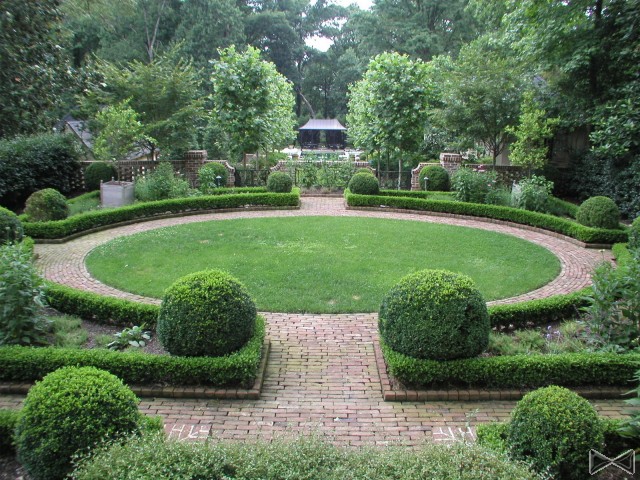
Сборник текстов
по английскому языку
по специальности 250109
«Садово-парковое и ландшафтное строительство»
Разработала: преподаватель
английского языка
высшей категории
Воронина М.В.
2015
| РАССМОТРЕНО на заседании ПЦК «Общеобразовательных, социально-экономических, гуманитарных и естественно-научных дисциплин» Председатель _______________ | ОДОБРЕНО методическим советом ГБПОУ НО «КБЛК» Протокол №__________ от___________________ Председатель _____________________ |
Данное учебное пособие предназначено для студентов специальности «Садово-парковое и ландшафтное строительство» по дисциплине «Английский язык». Материал представлен для изучения и закрепления специальной лексики будущих специалистов. В пособие включены такие темы как «Ландшафтный дизайн», «Ландшафтная растительность», «Экология»» и др.
Разработала: Воронина М.В., преподаватель английского языка ГБПОУ НО КБЛК
Содержание
Раздел I. Ландшафтный дизайн
4
1. Ландшафтный дизайн
4
2. Дизайн сегодня
5
3. Ландшафтный дизайнер
6
4. Диалог с дизайнером
7
5. Ландшафтное освещение
7
6. Садовые водоёмы
8
7. Разновидности газонов
9
8. Уход и обслуживание газонов
12
9. Садовые изгороди
13
10. Садовые конструкции
14
11. Садовые дорожки
15
12. Зимний сад
17
13. Теплица, её функции
18
14. Ландшафтный дизайн на участке
19
15. Ландшафтное проектирование
20
Раздел II. Ландшафтная растительность
22
1. Деревья и кустарники
22
2. Классификация цветочных культур
25
3. Циклы роста цветов
25
4. Как построить цветник у деревьев
29
5. Как построить клумбу
32
6. Озеленение
33
Раздел III. Экология
35
1. Водные ресурсы
35
2. Лесные пожары
37
3. Защита окружающей среды
38
4. Вредители насаждений
40
Интернет-источники
43
Раздел I. Ландшафтный дизайн
Landscape design
Landscape design is an independent profession and a design and art tradition, practiced by landscape designers, combining nature and culture. In contemporary practice landscape design bridges between landscape architecture and garden design.
Landscape designs focuses on both the integrated master landscape planning of a property and the specific garden design of landscape elements and plants within it. The practical, aesthetic, horticultural, and environmental sustainability components merit Landscape design inclusion. It is often divided into hardscape design and softscape design.
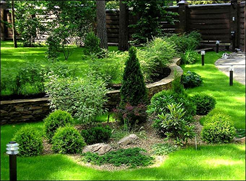
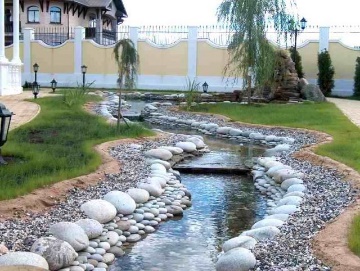
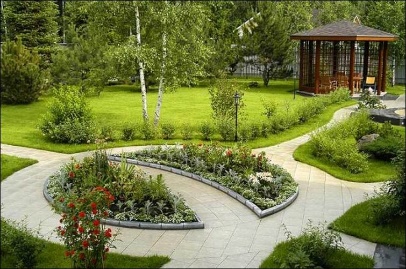
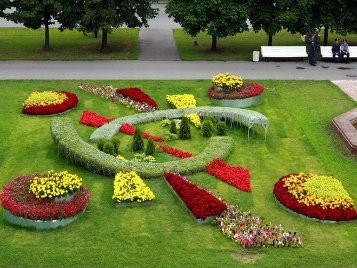
Softscape comprises the animate, horticultural elements of landscape design, i.e. plants. Softscape elements are complemented by hardscape design elements, such as stone walls, tile patios and brick walkways. Hardscape, or "hardscaping" consists of the inanimate elements of landscaping, especially any masonry work or woodwork. For instance, stone walls, concrete or brick patios, tile paths, wooden decks and wooden arbors would all be considered part of the hardscape. But anything used in landscaping that is not part of the softscape can be considered a hardscape element, including home accents such as water fountains and even pink flamingoes.
Ideally, a well-designed landscape incorporates a balance between hardscaping and softscaping.
Hardscape elements:
-
Can be thought of as "hard," yet movable, parts of the landscape, like gravel, paving and stones, etc.
-
They are inanimate objects.
-
Solid and unchanging.
-
Other examples of hardscape include walkways, retaining walls, pavers for paths or patios, outdoor kitchens, water features, gazebos, decks and driveways.
-
Can be natural, like stone, or man-made, like an outdoor structure or a planter.
-
Hardscape materials have different effects on the environment. Pavement, which is hardscaping, prevents water from soaking into the soil, thus increasing runoff, which can carry contaminants into streams. Porous materials allow water to soak into the soil.
-
A shrub is not hardscape.
Softscape elements:
-
"Soft" horticultural (living, growing) components of the landscape. These might include flowers, trees, shrubs, groundcovers, etc.
-
Change and evolve constantly, as they grow and adapt to climate and other conditions.
-
Are softer to the touch, quite literally. Think about touching the leaves of a tree or perennial, or blades of grass. They are soft, not hard.
-
A brick wall is not softscape.
Landscape designers often collaborate with related disciplines such as architecture and geography, soils and civil engineering, surveying, landscape contracting, botany, and artisan specialties. There can be significant overlap of talents and skills, depending on the education, licensing, and experience of the professional. Both landscape designers and landscape architects practice landscape design.
Landscape design today
Nowadays many city-dwellers aim to buy out-of-town realty as a place of permanent residency or a place to go on weekends. The man has always been drawn by nature. Due to this fact landscape design and landscape gardening become more and more popular.
That is landscape design what helps to solve the whole complex of problems and create atmosphere of comfort around you. The owner of the land lot should take an active part in landscape designing.
Landscape design project jointly worked out by specialists and the client creates feeling of comfort and closeness to nature.
Technique of landscape design is determined first of all by natural constituent. Climate influences the choice of plants. Relief determines architectural designing decisions of the land lot.
Landscape is formed due to multiplicity of nature and difference in relief structure. Investigation of geomorphological basis of the land lot and estimation of its change possibilities is an obligatory stage of landscape engineering.
That is why a detailed landscape analysis of the land lot should be held at the state of creation of the project. The Analysis includes detailed investigation of all landscape constituents located on the elaborated territory and bordering territory.
In course of the analysis flora of the elaborated land lot is investigated. Landscape engineering should be held after all necessary investigations have been completed.
Landscape designing is an entire set of arrangements which include accomplishment, gardening. Natural materials such as stone, plants, ponds and modern technical achievements such as illumination and pouring and drainage system are used.
The project for the land lot should be elaborated according to the law of nature but the space - according to the law of architecture.
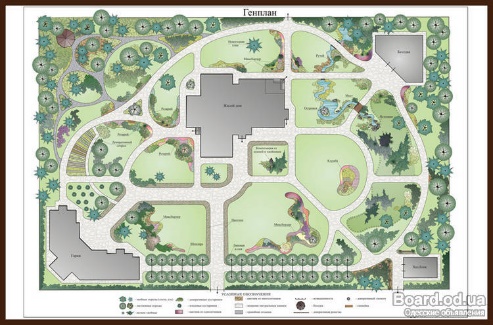
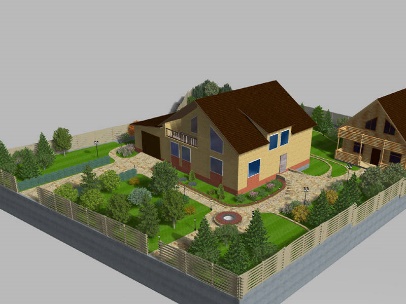
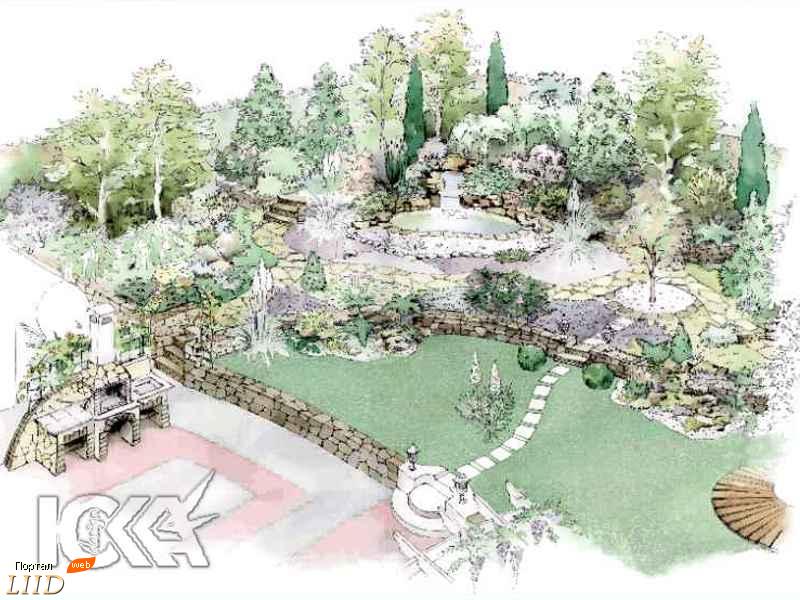
Three principle rules of colour harmony are used in landscape designing. These rules will help you to create a plant composition.
-
Any colour against the contrasting background seems more saturated, composition of contrasting colours will make the picture more saturated.
-
Some colours, if combined with each other, look less saturated, the closer colours are within the colour circle the less saturated their composition is.
-
The stronger the difference in brightness and saturation the stronger the contrast is.
For example, against red background orange looks yellow, yellow becomes more green and green seems more blue. Against the bright green background red and blue colours obtain violet tint, yellow becomes closer to orange.
To turn a land lot overgrown with wild plants into a cozy garden designed in a definite style in accordance with taste and preference of its owner that is the aim of landscape design. There are many variants of landscape design. Choice of variant depends on different factors such as nature of the ground, region traditions, taste and financial possibilities of the client. There is no and there cannot be two identical land lots. Each one is an exclusive masterpiece created in accordance with taste of the client.
A landscape designer
A landscape designer help to come up with a plan for the outdoor spaces. Such a plan include design treatments for plant materials as well as hardscapes and structures. Landscape designers have knowledge of both horticulture and landscape construction materials, thus equipping them to generate creative ideas for a yard and plan the layout of plants and features.
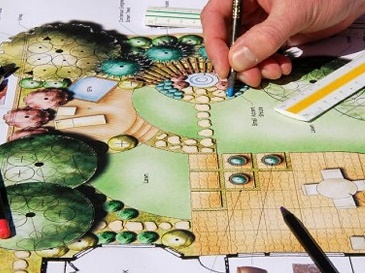
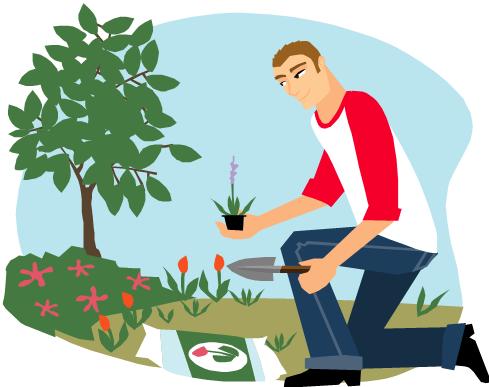
Many landscape designers manage a landscaping project from design to completion. They also work with local contractors. Designers typically have a vast knowledge of resources in the area. Clarify with your designer that they are indeed willing to manage the construction for you. Some larger, more established design companies may handle design and construction in house. Design/Build companies like this employ their own construction crews.
There are no certification or education requirements to become a landscape designer. However, many designers do hold degrees or certificates. This means that you will need to do your research on any designer you are considering. Ask to see landscape plan samples and photos of their previous designs. You may even ask for references to call.
Dialogue with professional landscape designer, Paul Corsetti

Q. What's your impression of online programs geared to someone who wants to become a landscape designer but who isn't able to attend school full-time?
A. I think that as long as the program being taught is based on solid knowledge of landscape design, it is a great start for the theory of design. A good program should be hands-on to teach students by doing actual projects, rather than to read and research how others did their work.
Q. What kinds of skills should someone looking to become a landscape designer particularly focus on honing while "working their way up," be it in school or on related jobs?
A. I'd recommend focusing on acquiring a wide range of abilities. Learning your plants and how to work with difficult soils is crucial if you want to become a landscape designer. One needs to recognize what type of soil you are designing gardens for. If no thought is put there, you may have a failed garden and a bad reputation in a few years. When working in the construction end of things, a landscape designer should make notes on material quantities, installation practices and any difficulties encountered. A landscape designer may have a wild imagination and excellent creativity, but when you design boulders to be placed in a yard where they have to be craned in over the house, the client will ask some serious financial questions!
Another thought is to make notes of how long it takes to do certain jobs. I often get asked how long the construction time frame would be to realize my designs. A good landscape designer should almost think like a contractor when designing… knowing how a construction job will function and knowing when to spot that a contractor is at his limit of labor skills, which might hinder your project. Is your design too difficult to construct or did you find the wrong contractor? That should be a question you can easily answer as a landscape designer. When the landscape designer looks for ways to make a job go smoother for the contractor, easier on a client's budget and still achieve a fantastic looking landscape, that landscape designer will get more referrals for future work. When the design is difficult and the landscape designer becomes even more difficult, your phone may not ring so often.
Landscape lighting
While many of us are working hard and putting in long hours on the job, we often don't get a chance to see our homes until after dark. Soft lighting in a dark outdoor environment is nothing short of magic. It provides a warm, inviting ambiance that beckons us outdoors. It creates mood, romance, and drama. It adds interest and intrigue to any setting. A growing number of homeowners are capturing this magic in their gardens through "nightscaping," one of the hottest trends in outdoor home improvement today.
Lighting can be one of the most important aspects of landscape and hardscape design, yet it is often overlooked or underdone. Proper outdoor lighting design allows you to highlight focal points and hide eyes ores. It can also be used to enhance safety and security, to accent special trees or plantings, and to create a festive atmosphere for outdoor entertaining.
Landscape lights also serve a number of needs, from letting you walk safely down a flagstone path at night, to giving you a place to spend time with your family after school and work. Outdoor lights even deter burglars and reduce crime. Yet for homeowners, choosing which areas to light can be a challenge. Here, landscape professionals share their expert tips for lighting different areas of the landscape. If you're planning for lighting in your landscape, this section will give you a better understanding of what to expect when landscape lights are installed, where the best places are to put lights, how to create effects with lights, and much more.
Landscape lighting is more than just shining some direct light at a walkway or up a tree. Not only are there techniques and methods for creating ambiance with lights, but some contractors even prefer to accent the architecture of the home rather than the trees or walkways or patio areas.
Garden reservoir and pond
Garden reservoir and pond - these artificial garden constructions have existed since ancient times. Today no one plot of land can manage without Garden pond or reservoir. Every garden pond or reservoir is a dominant of a well-planned landscape design. The area near the garden pond or reservoir is to be separated from another territory.
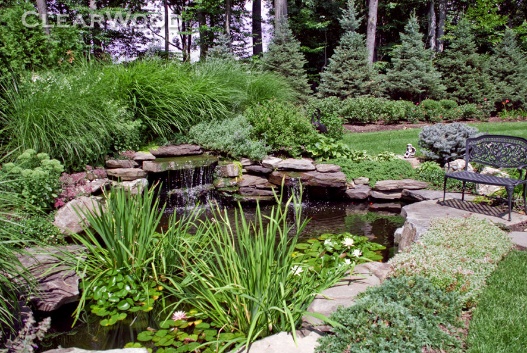

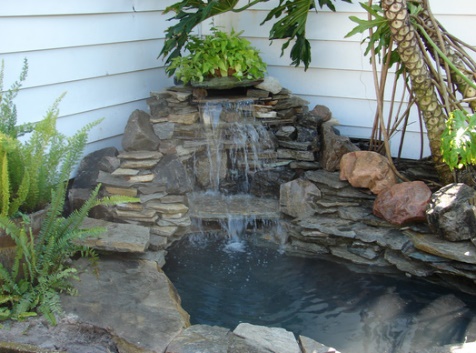
Garden pond or reservoir is to be constructed and situated on the expose area, defended from strong winds. Straight sunlight can be fallen down into a garden pond or reservoir not more than 6 hours a day. Construction of your garden pond or reservoir is to situate in a slight shade. There is no reason for constructing a garden pond or reservoir under the trees crown: leaves will fall down into garden pond or reservoir and roots can destroy the bottom of the construction.
It is more preferable form of the construction of garden pond or reservoir is round. Because rubbish is often gathered in the corners of square water garden constructions.
Cascade, stream, decorated with rocks are well fitted for the garden pond or reservoir. The area around garden pond or reservoir can be decorated with Iris, Hemerocallis, Astilbe and other landscape plants.
Rocks in a garden near garden constructions have attracted attention of people since ancient times. There is a philosophical doctrine about garden rocks. Japanese confirm that the viewing of rocks in a garden gets an opportunity to get to know oneself, to avoid of fuss, to reduce stress.
What is the secret of the attracting people for rocks in a garden? Probably, just now a person needs getting in contact with nature more than recently. Genetic memory of people instinctively is stretching out towards rocks in a garden, at which nature worked for millions of years. This fact explains the significance of rocks in a garden for a person.
Landscape design is not only for outdoor territories, but for interior too. Interior landscape design for home and office create really comfortable atmosphere of your environment.
Lawns
There is an element that combines small front gardens as well as large country estates and town districts. You can find it in regular front parks and in irregular natural gardens. This element is a lawn. It is impossible to locate only trees and flowerbeds. There should be a connecting link between all these elements. Moreover, a lawn fulfils this function at the same time being a main surfacing of a free space. However, it would not be deserved to consider a lawn as a subsidiary element. It can be a very beautiful object of landscaping. It can gladden your eye with its emerald greenery from early spring till late autumn. It can also be a playground if you chose a certain mix of herbs. At last a lawn can be used as a strengthening element when arranging a slope which can be planted practically only with grass.
Grassy lawn is a most widespread lawn. It represents a lot sown with herbs, which form a dense turf. Changing a composition of herbs, you can adapt your lawn for shadow or sunny lots, for damp or dry soil. You can even made it steady to trampling. In any case, a grassy lawn needs regular cutting, adding fertilizers, and working up with herbicides or weeding in order to protect it from not cereals. The grassy lawns can be divided into following kinds depending on composition of used herbs and the degree of well grimness.

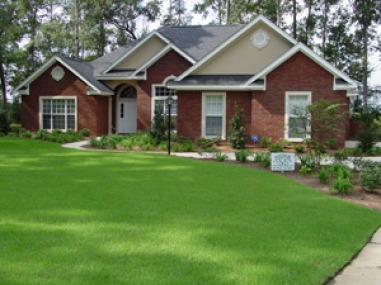
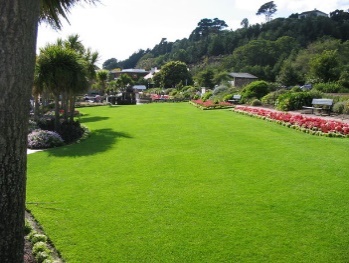
A classical (top-quality) lawn has a decorative function. Its features are an emerald greenery and flat surfacing that does not bear any trampling. Low narrow-leaved (angustifoliate) cereals are used for arranging such lawns. For example, different kinds of spear grass (agrostis), poi, festuca can format a classical lawn. The soil should be rich fed with fertilizers and properly smoothed out because even tiny knolls and holes will be well seen at the surfacing of such a lawn. The lawn needs low and regular mowing, at least once a week. Being cut properly and groomed well a classical lawn looks wonderful. It is usually arranged in front of the estate and in the main areas where you can admire it but not to trample.
A first-quality (ordinary) lawn allows not only to admire it but also to trample. Of course, it cannot bear any comparison with a groomed classical lawn by its appearance but it is less capricious and simpler in arranging and maintenance. The composition of herbs for a first-quality lawn should contain raygrass (lolium perrene) and other broad-leaved cereals. But it is worth noticing that the composition should also include 10-30% narrow-leaved cereals, otherwise lolium can form knolls. An ordinary lawn needs rear mowing (twice a month), except the periods of fast grass growing such as spring and early summer. In those periods the lawn should be mowed more often. Wild growing herbs do not seen on a first-quality lawn.
A second-quality lawn is usually located on the large areas, in towns. It is formed with the same cereals as a top-quality lawn, however, the preparation of the soil can be less proper and the maintenance can be less often. We should notice here that any classical or top-quality lawn can turn into a second-quality one due to many reasons and vice versa. You can always improve a second-quality lawn after realizing the reasons of its worsening.
A rolling lawn is not another kind of a lawn but a new way of arranging it. You can form a classical as well as a top-quality lawn by this way. The turf for such a lawn is grown at the special fields. Then the turf is cut down and rolled in. In this state, it is transported to the location and rolled out there onto the beforehand prepared and smoothed out soil. So it is possible to get a lawn with ready turf right away by this way. The rolling lawn is very handy on slopes, where it needs much time for grass to implant and on the trampled soil and on the poor polluted soil in towns. However, a rolling lawn needs also proper maintenance during first months. The quality of this lawn depends on the fact when it is cut, where and how it was stored, how well it was watered after rolling out and how well the soil was prepared for the lawn. Nowadays the firms - producers of the rolling lawns use the methods of implanting the turf on the new soil rather successfully. This way of arranging lawns may have many perspectives.
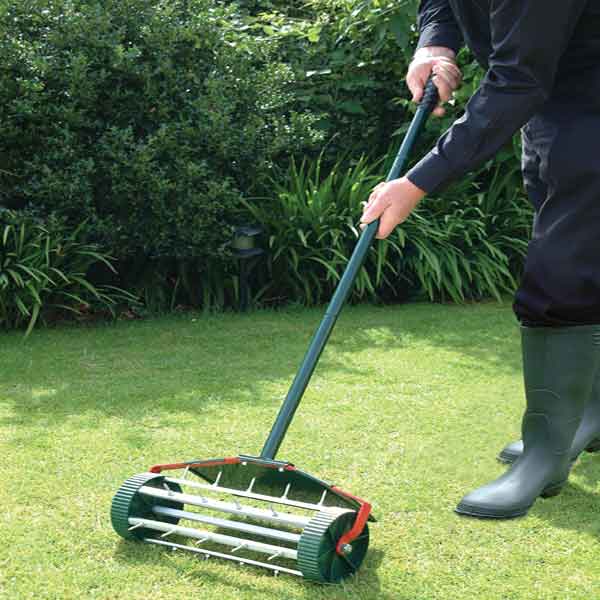
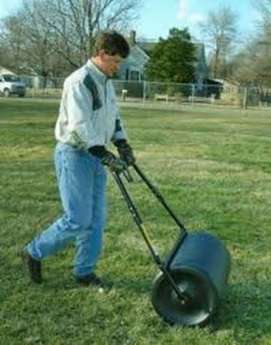

A meadow lawn is rather popular in Russia. A meadow is a lot covered by cereals as well as not cereals, including wild growing herbs, with rather tough stems. A meadow, like any lawn, cannot bear much trampling, but unlike a lawn, it can be mowed only once a month. Moreover, a meadow does not need weeding at all. Being located at the right place a meadow lawn can look more natural and nicer than a grassy one. In this case, you should choose the seeds for the lawn more properly. For example, fast growing herbs will not do here. And you should remember that it is not worth doing to arrange a meadow lawn on the rich soil in order to prevent it from turning into a thicket of high grass looking more like a waste plot of land.
A moresque lawn looks like a meadow one. A moresque lawn is a lot sown with low narrow-leaved (angustifoliate) herbs and wild flowers. It is not so easy to arrange such a lawn. There is always the risk that it will have a wild and bad-groomed appearance. But if you have a lot with poor soil that is not suitable for growing up something else you can make a try and turn it into a blooming meadow. All that you need is to prepare the soil, choose a proper mixture of herbs and uproot perennial weeds. Though it seems quite easy to arrange the moresque lawn, you should remember that it is difficult enough to groom the lawn like that. It needs manual weeding because the herbicides can damage the main herbs. You can mow this lawn not very often but you should have special necessities. As a rule, without proper care the moresque lawn turns into an unattractive place with weeds already in a year.
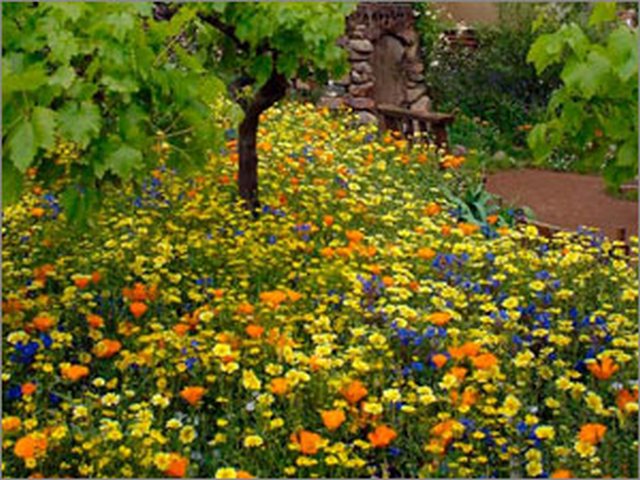

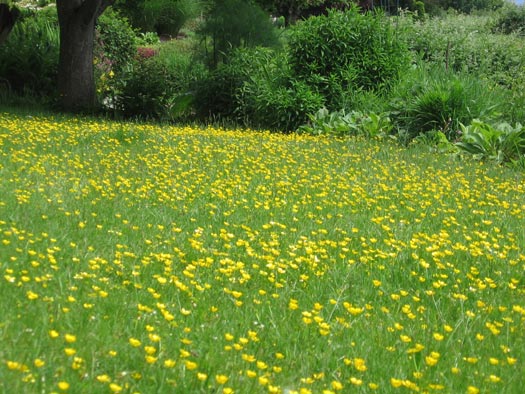
The most popular flowers and bulbous plants for the moresque lawn are the following: crocuses, violets, cornflowers, buttercups, meadow camomiles. Festuca and spear grass (agrostis) should prevail over the other herbs in mixture. As to the mixture of flower seeds it should contain not only perennials but also the most popular annuals. In the whole mass the flower seeds should make from 5% up to 10%.
It is worth mentioning a soil-covering lawn that looks very original and unusual. It is formed not from cereals but from soil-covering plants. Being arranged properly it looks nice enough especially during the periods of blooming the plants such as camomile, thyme and veronica. But of course, there are some bad points in the lawns like those. The surface of a soil-covering lawn is not so flat as that one of the grassy lawn. And in the autumn the leaves of plants in the soil-covering lawn become brown. Arranging such lawns it is very important to uproot all the weeds because in the future using herbicides you run the risk to do harm the plants, which form the soil-covering lawn. Though it is possible to sow the lawn with camomile and thyme, you will have to plant out seedlings of the other plants for such lawns. But the strong point of the soil-covering lawn is the fact that you need not to mow it. The care just includes removing inflorescences that have stopped blooming.
A soil-covering lawn can be also formed from soil-covering shrubs such as juniper, cornel, heather and others. The choice of those plants is enormous. They can be planted in the areas where nobody walks. They can cover densely the places of the garden where the grass grows poorly or where it is difficult to mow the grass, for example under the trees or in the slopes. Only the young plants need proper care. Then being rooted they will need weeding and trimming from time to time.
In order to increase the steadiness of the lawn to trampling you can use a lawn lattice. It is also used for strengthening slopes. A plastic lawn lattice has a green color and a lawn grass is sprouted in its cells. This lattice looks like an ordinary lawn but it is possible not only to trample the lattice but also to drive and arrange the parking on it. A concrete lawn lattice is irreplaceable on the steep slopes where there are no other methods to root the plants.
So, you have to know the main kinds of lawns. You are welcome to come to us and we will be glad to help in choosing the more appropriate lawn for your garden. We can also renew the spoiled or neglected lawn or adjust regular care of your formed lawn in order you can get pleasure from admiring it.
Lawn care and maintenance
Planting and seeding
Early autumn, spring, and early summer are the primary seasons to seed, lay sod (turf), plant 'liners', or 'sprig' new lawns, when the soil is warmer and air cooler. Seeding is the least expensive, but may take longer for the lawn to be established. Aerating just before planting/seeding may promote deeper root growth and thicker turf.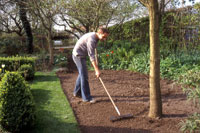
Sodding (American English), or turfing (British English), provides an almost instant lawn, and can be undertaken in most temperate climates in any season, but is more expensive and more vulnerable to drought until established. Hydroseeding is a quick, less expensive method of planting large, sloped or hillside landscapes. Some grasses and sedges are available and planted from 'liner' and 4-inch (100 mm) containers, from 'flats', 'plugs' or 'sprigs', and are planted apart to grow together.
Fertilizers and chemicals
Various organic and inorganic or synthetic fertilizers are available, with instant or time-release applications. Pesticides, which includes biological and chemical herbicides, insecticides and fungicides are available. Consideration for their effects on the lawn and garden ecosystem and via runoff and dispersion on the surrounding environment, can constrain their use. 
Sustainable gardening uses organic horticulture methods, such as organic fertilizers, biological pest control, beneficial insects, and companion planting, among other methods, to sustain an attractive lawn in a safe garden. An example of an organic herbicide is corn gluten meal, which releases an 'organic dipeptide' into the soil to inhibit root formation of germinating weed seeds. An example of an organic alternative to insecticide use is applying beneficial nematodes to combat soil-dwelling grubs, such as the larvae of chafer beetles. The Integrated Pest Management approach is a coordinated low impact approach.
Lawn & Garden hedge
A green grass of a lawn supplies with comfort, regulates humidity of an air and moisture of a soil, absorbs noise and dust. A lawn is an imported element of a landscape design.
Designers make different lawn according to the using and conditions:
- decorative lawn - the most beautiful lawn, but it is not hard wear against trampling;
- sport - lawn grass mixture for sports fields and areas with hard wear and traffic consist of wear tolerant and fine leaved species which gives the best carpet of strong grass when carefully established and maintained;
- sun and shade lawn grass;
- universal lawn grass;
Designers can establish for a customer ready lawn grass or lawn laying, that cultivates in the open air and then is drugged out with the layer of earth about 5 centimeters.
A lawn grass need much care of and service.
Garden Hedge looks nicely on a plot. Garden hedge provides a garden with defense from glances of foreign people, from cold wind and a favorable micro-climate appears. Garden hedge with a lawn is a perfect background for landscape plants, flower bed plants and other greenery, garden constructions, garden and water features. Garden hedge can show limits between different areas that your landscape design foresees.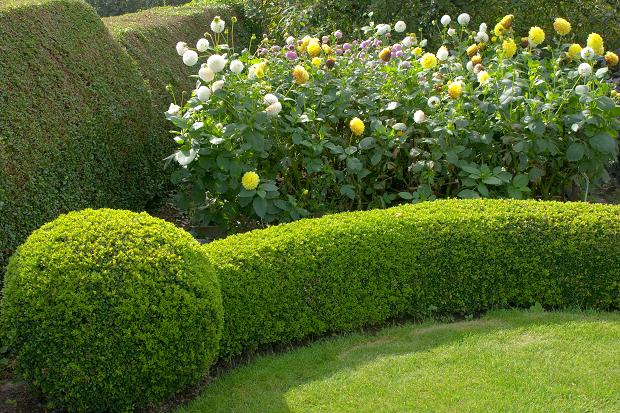
There are straight, broken up, mixed, flexible by form garden hedge. There are the trimmed and grown by its nature garden hedge.
Sometimes garden hedge are used as a defense from penetration to the garden. This is the thorny garden hedge. The garden hedge outside is usually higher than that one inside because of the garden hedge inside the plot has got only decorative importance.
Before planting a garden hedge, one is to find out direction of sunlight. Whether a hedge make a deep shade for another landscape plants or not?
The growing of a garden hedge is a very hardworking process, but it is cheaper then to build a fence of wood, stone or brick. Much patience are required for growing up a garden hedge - 3 -7 years depending on the landscape plants: quickly-grown or slow-grown.
The mixed garden hedge of birches and fir-trees looks like a Russian forest. The mixed garden hedge of trees and bushes grown by nature is simple in garden service and care of, but occupies extensive area. The mixed and grown by nature garden hedge are a dwelling for birds, insects, little animals that is very important for ecology in a garden and provides your landscape design with emotions. The mixed garden hedge of high deciduous and lower evergreens (conifer) provides a garden and garden constructions with shade in summer and sunlight in winter. The garden hedge of conifers looks effectively all the year.
Landscape & Garden constructions
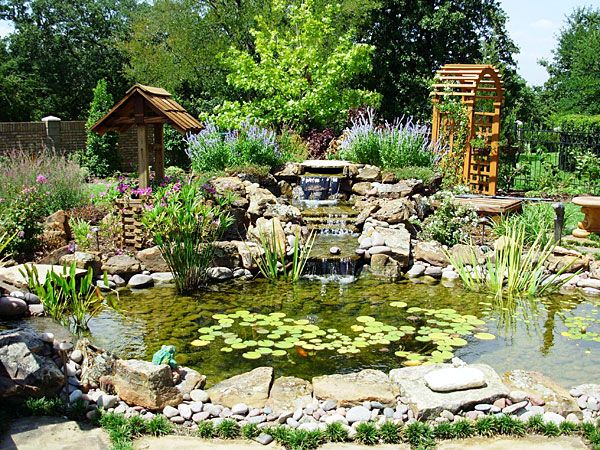
Garden constructions are driveway, paths, walks, walling, garden pavilion, gazebo, pergola, screened porch and arch, and at last different items of rocks in the garden.
Driveway, paths, walks - designers are carrying out paving by stone for driveway, using a sand or gravel for garden paths and walks. This garden constructions is the first step in the maintenance of a landscape design.
Walling - whether it to be for privacy, shelter, to create a barrier or simply to frame an area, walls can play an important part in landscape design. This garden construction is built not often.
Pavilion, gazebo - is a not big building for the rest near a reservoir in a garden with excellent panorama of a landscape design. As a rule pavilions have dot a simple garden construction. This garden construction is to be carried out according to the project . In the project of a garden construction of the pavilion is to have got some decorative elements. Lianas planted near a pavilion attach a particular romance to this garden construction.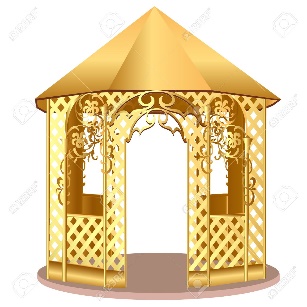
Pergola - here we use the term "pergola" to mean any kind of garden constructions formed from rows of upright wooden pillars supporting horizontal beam such as covered walkways. Pergola is an attractive element of landscape design.
Arch and porch - a decorative screened arch or porch covered with climbing roses and honeysuckle vines attract beetles and butterflies. In landscape design one can use arch and porch of different materials: wood, stone, metal. Pergola, a decorative screened porch covered with climbing roses and honeysuckle vines attract butterflies.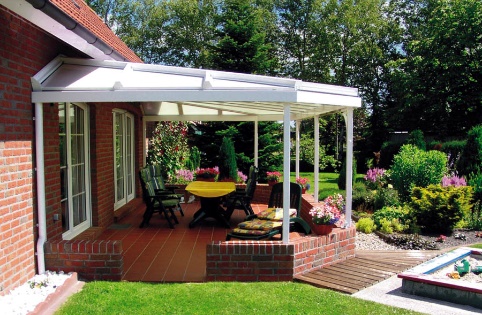
Paths, walks & driveways
What's more appealing than a winding path that draws your family and friends further into your world? Paths and Walkways, as design elements, direct traffic expressively. Who you are, your home and your family are at the essence of the path you create with your Selfscapes designer.
Having a path or walkway can lead to any part of a homeowners yard. Whether it be a firepit, pond, waterfall or garden; all of which can be created with Selfscape designers. Selfscape can create a design for any family.
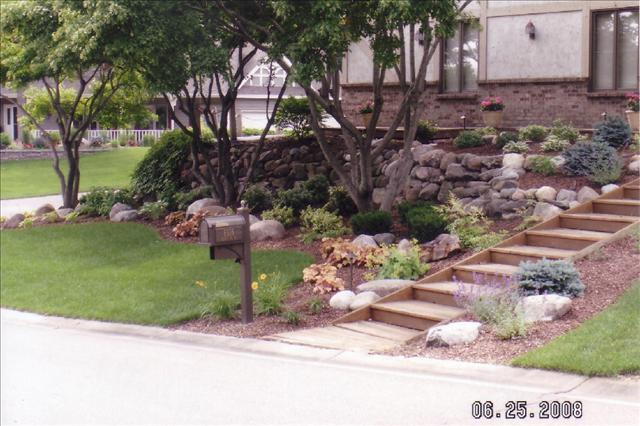

Create a path in the garden is hard work, but certainly within the reach of the lovers of DIY.As soon as it rains, the paths and the paths of the garden covered with gravel, sand or grass easily become muddy and not very viable. One way to avoid this is to create a path paved with stones (natural or artificial) which not only enable us to walk in a more clean and safe but also, if made with expertise, to enhance the environment of the garden itself .
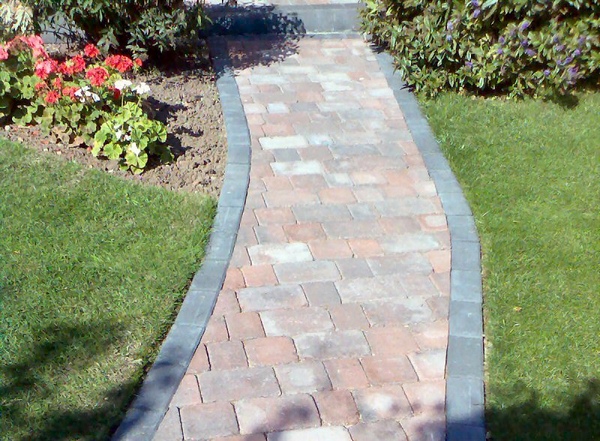
Of course, you can also find slabs of agglomerated material at a good price, we invite you to visit the special page dedicated to materials for external paving . In this article we will try to adopt the most economical solution in absolute but not without aesthetic value if done properly. In commerce there are molds made of plastic material which present the joints that allow to realize different shapes by pouring into a casting of concrete.
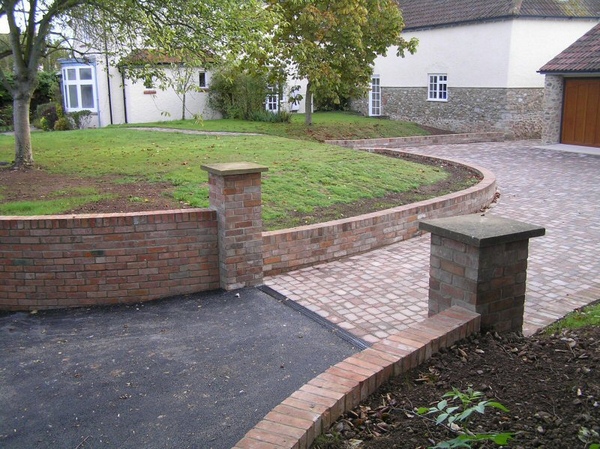
If you want to save even more money you can make yourself formwork with strips of wood and a few nails, nothing could be simpler.
You have to first lubricate the molds with oil serving us of an old rag, this will ensure that the concrete can transform themselves without difficulty once dry, when we're going to remove the mold.
As I said, thanks to the cuts applied on the strips can be made different ways, once we have decided what form do not realize we have to pour the concrete but not before they had made an indentation in the ground where we want to slide the driveway. Normally slabs of flooring are flush with the ground, and to do this, it is necessary to dig the ground to a depth equal to twice the thickness of the sheets themselves.
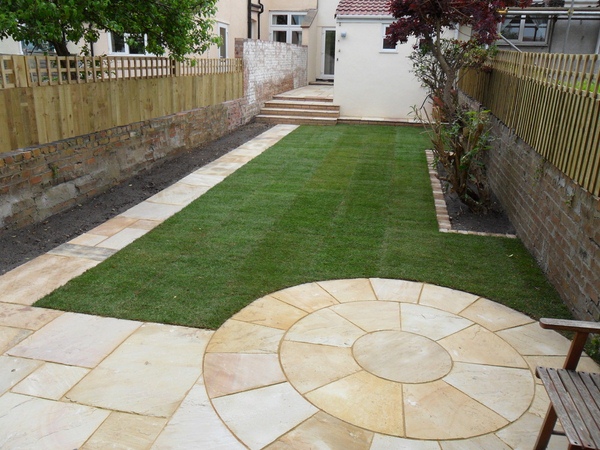
Part of the excavated material should be kept to put it back inside the joints between the slabs which can be more or less broad, depending on your taste, and where you can then sow the grass. Inside the excavation should be settled out of the sand to a thickness equal to that of the plates and smoothed with a trowel to make it suitable to the laying of the plates themselves and also acting as the background absorption of rainwater.
We realize, therefore, the plates throwing the concrete, prepared as described in this article. Compress well the concrete with the trowel, especially in the corners, in such a way that there are no voids. Always with the trowel lisciamo well the surface of the slab, possibly by spraying a little water to facilitate the work.
The sheets can be made directly on the driveway or elsewhere and then transported to the site of the excavation. The slabs of concrete can be deformed after just over an hour hitting leggeremente the mold with a hammer. Do not walk on the sheet before 4 or 5 days and if the driveway will be necessary to reinforce the network with plates of iron during the pouring of the concrete.
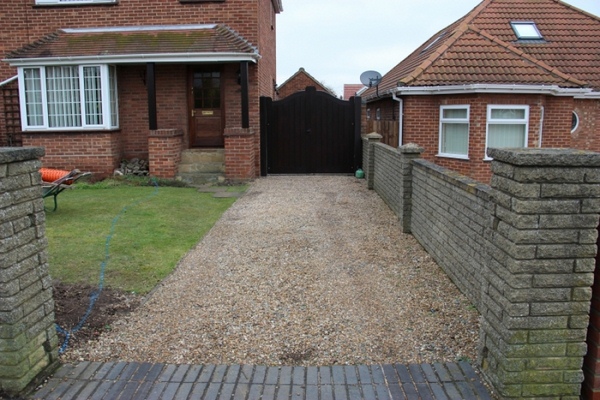
Winter garden
The origin of the winter garden dates back to the 17th to 19th centuries where European nobility would construct large conservatories that would house tropical and subtropical plants and would act as an extension of their living space. Many of these would be attached to their main palaces. Earlier versions would be constructed of masonry with large windows and a glass roof, usually in the Classical or Gothic styles. 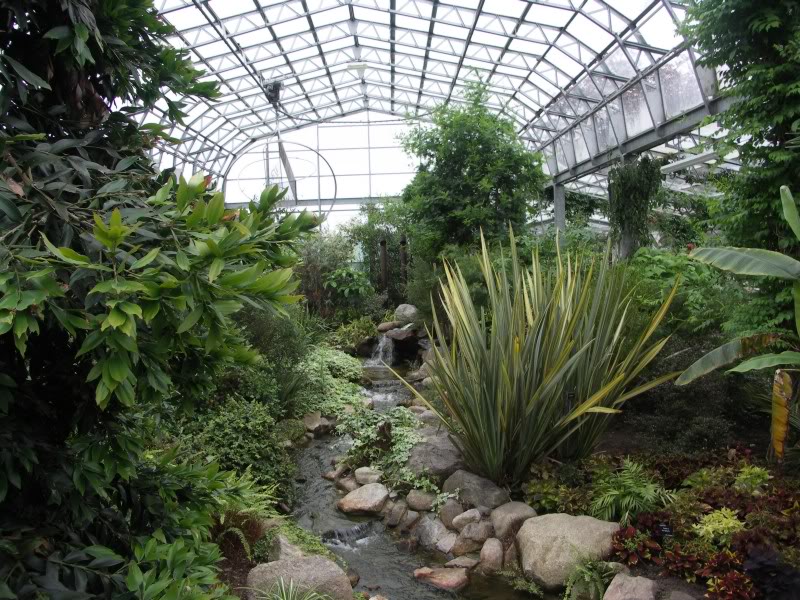
While in the 19th century many of these conservatories were made out of iron and curvilinear glass. Winter gardens were not just restricted to private residence, many were built for the greater public. The first large public winter garden was built in 1842-46 in Regent's Park in London and was used for evening occasions, large flower shows and social gatherings. Other winter gardens, such as The Crystal Palace by Sir Joseph Paxton in 1851, were soon built and used for a variety of purposes.
The modern winter garden is usually a garden planted either to produce food, or at least to remain visibly planted and slowly develop, throughout the winter, or else a garden whose plants will serve as living decoration all winter. One basic premise, in temperate or colder regions, to the winter garden is that the plants may indeed become dormant when snow covers the ground, but will grow each time the sun heats at least part of the plant to above freezing (snow or not), especially in regions where snow cover and below-freezing temperatures are not constant for months at a time.
Greenhouse
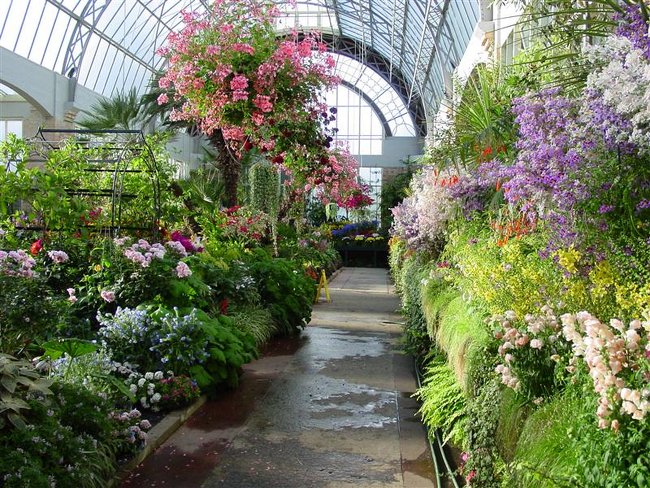
A greenhouse is a nurturing environment for plants that is set apart from the rest of the world. It is a space where in various conditions like heat, light and moisture can be controlled to a greater degree than is possible in any outdoor setting. Surely this degree of control has been a crucial factor in the increasing popularity of greenhouses. They can also be appealing structures in their own right, contributing to the beauty and harmony of our backyard environments.
How a garden greenhouse works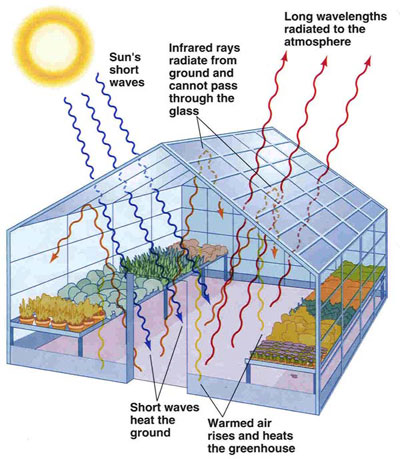
Many people that are new to growing plants don't fully understand how a garden greenhouse works. What happens is during the day the sun emits rays of short wave infrared light. The short wave infrared light is able to pass through glass. After hitting a surface the waves turn into thermal energy. This energy is a long wave infrared light that can't escape. The final touch to the garden greenhouse is the garden greenhouse gases. These gases simply act as a blanket for the garden greenhouse.
What to use your greenhouse nursery for
Many people build a greenhouse nursery just for their love of gardening. They are able to enjoy flowers and plants all year round. The greenhouse nursery is a great place to grow fresh herbs and vegetables for canning and cooking all year, even in the colder months.
Your greenhouse nursery can bring you tons of joy and keep you busy with your favourite hobby even when there is frost on the ground. You can construct the greenhouse nursery with a simple knowledge of tools and construction. You will be given a full guide on step by step instruction to creating your beautiful greenhouse nursery.
Benefits of a backyard greenhouse
A backyard greenhouse will trap the sun's rays and create a warm humid atmosphere. They can help you grow plants that may otherwise be difficult to grow in your area's climate.
Landscape design on the plot
Landscape design is a result of human's activity on a plot of land for creating beautiful views.
Landscape design is a method of providing inside territories with artistic value.
Landscape design has some styles.
Landscape style is a style of landscape design based on natural views without geometric figures, with flexible forms of garden constructions: paths and walks, walling, pavilion, pergola, arch, - with flexible forms of garden water features: garden reservoirs, ponds, - with flexible forms of groups of landscape plants: trees, bushes, flowers in flower bed.
Designers use a landscape plants from a nursery that makes the process of greenery very quick and simple. These elements are well based on the background of garden hedge and lawn.
Elements of landscape design:
- stony slope with garden pond or reservoir;
- area for the rest with garden pavilion or other constructions between trees;
- wall of stone with flowers or other rocks in a garden;
- garden water features: spring, stream and pond or reservoir with garden rocks on the banks and bushes, flowers between them.
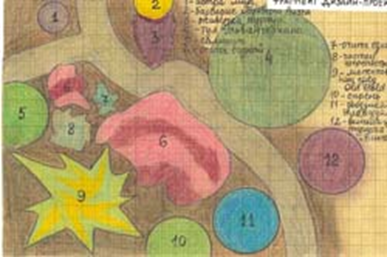
Landscape project is an artistic passport of a plot. There are usually some zones in the landscape design of the garden without clear limits, which are in regard with illumination of sunlight.
It's important to project out beautiful views and isolate poor details, to take into account the wishes of the plot's owner and opportunity of maintenance of the landscape project. One can have got not many landscape plants: trees, bushes, flowers or elements of landscape design in the garden: flower-bed, pavilion, garden reservoir or pond, garden rocks but everything is to be in harmony with each other.
We work as with the empty territories which have been taken away under a landscape, and with old gardens, with forest plots. Usually, landscape design of forest plots does not suffice an ornament, beauty, bright colors. The eye of the person has a rest, but it is few emotions loading from this landscape. The decollate, densely overgrown park or forest has be cleared of low-value underbrush and defunct trees. It considerably improves the isolation of laid out a lawn. Landscape design is altered only on areas free from trees. On a solar glade it is possible to arrange a flower bed, under trees to plant the long-term flowers well growing in a shade, some bulbous, low bushes. Flowers and bushes are necessary for distributing on flowering time. And all season different plants will serially blossom, and landscape design of the plot will be attractive.
Master plan drawings
All beautiful landscapes begin with a plan. But not all plans produce beautiful landscapes. So the question is: What differentiates good landscaping plans from bad ones? Good plans incorporate the fundamental principles of art and landscape design. They also follow a step-by-step design process that requires a great deal of input from the clients and therefore ensures that the finished design meets their expectations and fulfills their needs/desires.
The Process
Interview and site analysis - Your designer will walk through your property with you to identify and document any likes or dislikes you may have about the site in its current state and get a general idea of what you want to accomplish. He/she will present various options and try to determine what style of landscape design suits your tastes. During this meeting, you also will be asked for the completed questionnaire which was sent to you in advance of the meeting. The information in the questionnaire gives us detailed input about your needs and desires regarding the landscape. The designer will then take measurements and photographs of the site, record information about the layout of the property, changes in the terrain, drainage conditions, etc. Using this information, a conceptual plan will be drafted.
Conceptual plan - The designer will next meet with you to review the conceptual plan. It will provide an overview of the project and will give details about such things as the location and general content of planting beds, the placement and nature of hardscape and/or water features, and the creation or remaking of functional areas within the landscape. During this meeting, you should check the conceptual plan against the questionnaire that you completed during the site analysis to determine if all of your needs and desires are being addressed.
Master plan - Upon approval of the conceptual plan, the designer will then prepare a scaled master plan which will not only show the layout of planting beds and other features within the landscape, but also give a comprehensive listing of plants in the design, and provide specifications on hardscape features. In some cases, you may be provided with image designs of your landscape showing before and after photos of how the new landscaping will look, in addition to being provided with a two-dimensional master plan. In other cases, the design might also be detailed in 3D designs.
The Benefits
A cohesive design - It's a fact that every beautiful landscape begins with a plan. If you try to construct a landscape without having an overall design, you'll end up with a piecemeal look. Our designers are trained in the principles of landscape design and experienced in the application of them. We know plants, we know construction techniques, and we know how to put the two together to create beautiful, functional, long-lasting, and low-maintenance landscapes that are tailored to meet the needs and desires of our clients.
An informative design - What good is nice landscaping if you don't know how to maintain it? At Botanica Atlanta, we don't just give you a drawing and a list of plants. We give you detailed information about each plant in the design and a comprehensive maintenance schedule so that you or your landscaping crew can keep your property looking good as the plants mature.
A fulfilled design - The best designs are no good if they are not properly implemented. Our crews have the experience to expertly do all of the work in your landscaping installation project from start to finish, including planting, irrigation, hardscaping, lighting, and more.
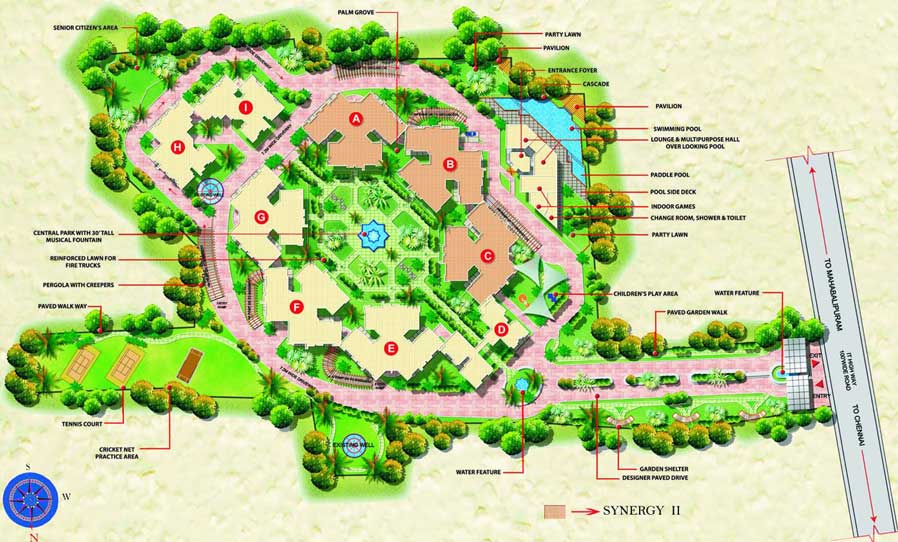
Раздел II. Ландшафтные растительность
Trees and bushes
Trees and bushes are the main elements of landscaping any personal plot no matter whatever size it has. Any picture will look only better being decorated with a good frame. And that is the case in the decorative picture of nature. Trees and bushes are the frame against which background the landscaper creates his artistic sketch. Grouping the plants in different combinations, the designer can produce unusual and wonderful pictures, which will give true aesthetic pleasure those who watch all this.
When choosing trees and bushes we should take into account climatic conditions, principles of location and decorative features of plants. Many factors influence the growth and development of decorative plants and their usage in the "green building". But the most important ecological factors are the temperature of the air and the soil, food and water regime, lighting and the composition of the air. Being the product of the definite environment, the plants in their turn influence it greatly. Some important factors of environment may be regulated and corrected by conducting appropriate agrotechnical measures.
The loamy and sandy-loam soils are considered the best in gardening. They have a good structure and enough reserve of the nutrient matters. When choosing trees and bushes for your garden try to take into account not only the purpose of the territory being planted but also the requirements of the plants to the growth conditions. You should have clear view of the planting material you are dealing with. For example you'd better plant the more valuable and nicely blossoming samples somewhere near the house. At the same time, the more hardy local plants will do better in the open areas exposed to strong cold winds.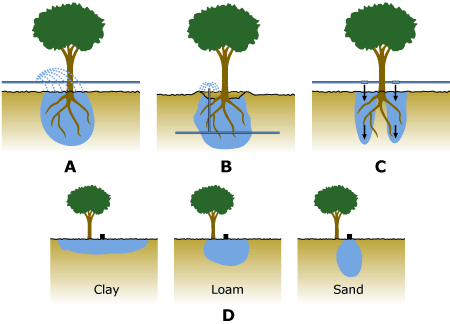
Planting trees and bushes around the buildings on the territory is carried out according to the definite plan. It is usually done solitarily or by groups of different sizes. They can be dense or loose in structure, harmonious or contrasting in forms and colours. You should be well aware about the appearance of your trees and bushes in the grown-up state as far back as on the stage of landscape projecting. It will allow you to define right intervals between plants and will lead to the demonstration of the highest decorativeness. In negligible planting, the light-requiring samples often drop out and the trees become thin and bare from below.
The trees and bushes that are growing easily usually have very scenic look. In the greening territory, the crowns of the plants create interesting typical forms and the moments of picturesqueness with special vivid effect.
The density of the crown also gives specific vividness to the green plants. The trees with powerful crowns - oak, chestnut, ash, elm and white poplar - have rather dense crowns. The plants with thin branches - birch, willow and rowan - have delicate crowns. The leaf-bearing trees have oval, round, conical, columned, spherical, original picturesque and weeping forms of the crown.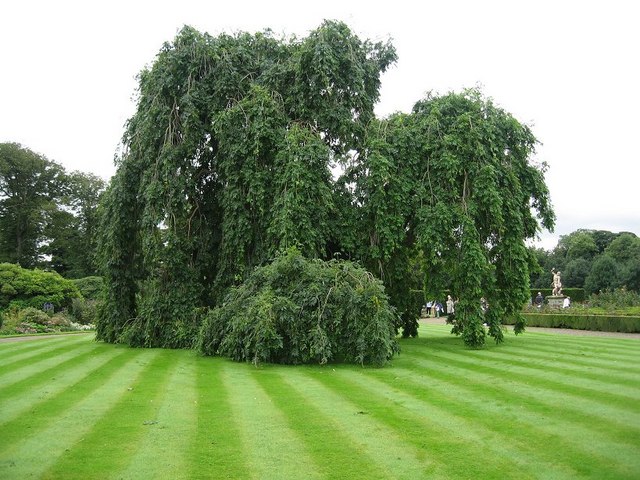
The plants with the conical form of the crown usually used for creating the contrasts and upsetting the monotony of the horizontal lines.
The trees with weeping crown have graceful thin branches falling down like a cascade. Those plants look especially nicely on the banks of reservoirs. Many leaf-bearing samples have weeping crown form. The decorative forms of birch, European beech, elm, yellow acacia, rowan and mulberry have this distinctive feature.
The oval and spherical forms are characterized by perfectly right round, oval and ovoid crown outlines. The most beautiful samples among leaf-bearing trees with spherical crown form are sharp-leaved maple, horse chestnut and white acacia.
The pillow-shaped and outstretched forms can be regarded as dwarf samples. They grow in width mostly and hardly give any increase in height. As an example, we can call red elder and box-tree.
But the whole look of the decorative plants depends not only on the form of crown but also on the attire, which leaves fruits and flowers create.
The plant colouring gives the specific look to the garden area and effective vividness to any planting. In order to use this feature of colouring properly you should know peculiarities of various plants' coloration and features of different colours in all details. 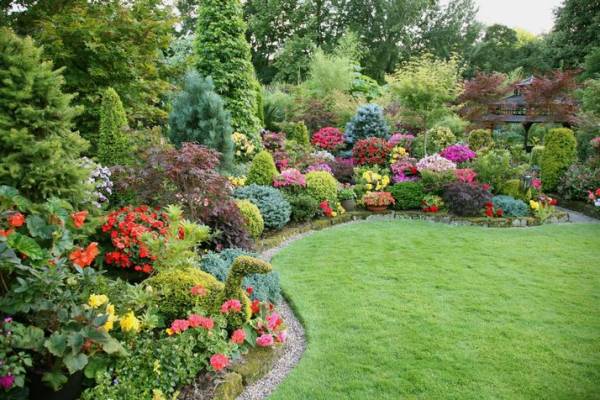
The yellow colour is one of the brightest ones and it is closer to the white color than other ones. It is well stood out against any background especially a dark one. The spatial distance does not influence it a lot. The decorative plants with yellow leaves and flowers look as though they shone or sparkled in the darkness. Though they lose that feature when the sun is shining. When there are plants with yellow colour in the decorative colouring composition it excites warmth and cheerfulness, helps the decorative group with such colour come out ahead optically and be light dominant spot in the whole composition.
The red colours are the most distinguished in any composition of green planting. They possess the strongest tone influence. These colours always stand out against any composition of colours no matter what color and how many colours that composition has. Using the red colour will give the scenery effectiveness and vividness but you should use that colour carefully because underlined predominance of the red in the colouring composition may influence ungracefully and repulsively.
The violet colour relates to the cold colours. The plants with prevailing violet colour are found rather rarely. The violet colour goes well enough with yellow, orange and green colours.
The plants with white colour have neutral influence. This colour harmonizes with any colour and especially with cold colours as though refreshing them. Presence of the white in the composition intensifies the other colours. One more feature of the plants with white color is their ability to create the effect of the light spot in the darkness. This feature may be used when you wish to create special night effects in the green planting.
The green colour is the main shade of the garden area. It is the color of the lawns, trees and bushes. The green is the main colour of nature and plays a great role in creating any colouring composition. Among all colours in nature, the green has the most number of nuances.
The flowers and fruits of decorative plants having been painted in different bright colours play a crucial role in the colouring dynamic of green planting. For the plants that are blossoming in spring the most typical flowering takes place before leaf blooming.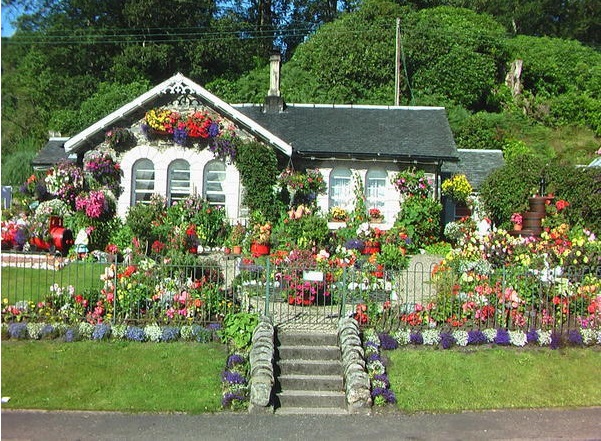
The best seasons for planting trees and bushes are spring and autumn. The period of spring planting begins right after the soil thawed out and stops at the beginning of leaf blooming, in autumn - at the beginning of leaf fall. Most trees and bushes are planted with open root system into beforehand prepared holes. The plants with closed root system (with soil clod in tough or soft containers) can be planted in any season but they require proper care.
You should be careful about the roots before planting in order they do not get dry. So do not stay the plants bared in the sun, in the wind or in the frost. But if it happened then put them into the water for nearly 24 hours. The trees and bushes are usually planted as deep into the ground as they grew in the nursery. Before planting, you'd better remove injured roots.
When planting the hole should be filled with fertile soil mixed with peat, humus or compost. It is better not to fertilize planted trees until they settle in the environment. But what you should really do is to water them richly and to realize the regular soil loosening trying to retain moisture. Some trees and bushes should be tied to the peg. If necessary you can conduct plant cutting which is usually done before planting or right away after it. The sprouts are shortened by one-third of the whole length.
The appearance of trees and bushes depends greatly on the after-planting care for them during many years. The care means watering, fertilizing, removing finished blossoming flowers and inflorescences and maintaining the crown in a good state what can be done by cutting and thinning out.
When visiting shops, gardening centers and nurseries you usually come around large variety of plants. Their assortment is huge but the nicer the plants the more difficult to decide what will be more suitable for your garden. So before you make a choice try to find out enough true information about the trees and bushes.
Classifying flowering plants
You should be familiar with the plants you intend to plant. Your knowledge in classifying and naming plants would give you the right choice to select which one is suited to your place, soil, temperature, and other requirements your plants needs in their growing period.
Different flower plants varies in their growth patterns. This is critical in your decision making before you endeavor in flower gardening.
Therefore, don't be in a haste to enter into flowering gardening unless you're sure you have already the knowledge to enter into.
Classification of flowers based on their growth cycle.
Annuals
Flowers in this classification lives only in one growing season, completing its life cycle (seed, flowering, fruiting, and death) in that period.
This group includes many weeds, vegetables, and wild flowers.
The duration of a cycle is varied, it may be a few weeks to several months, depending on the species. These flowers are produced for use in the landscape including some vegetables.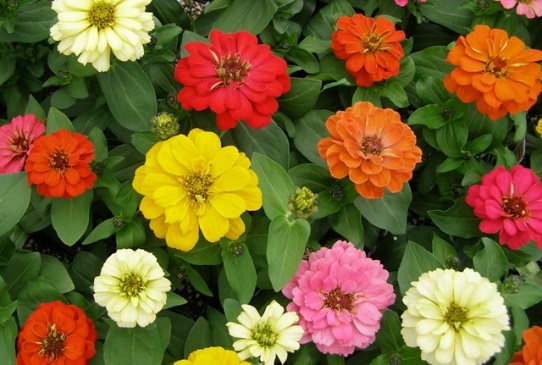
Some popular flowers includes, Geranium (Geranium spp.), Zinnia (Zinnia elegans), Marigold (Tagetes spp.), and Pansy (Viola tricolor).
This class of plants is again divided by the cultivator into two classes, - the Hardy, and the Half-hardy or tender kinds.
Hardy Annuals are those which require no artificial heat at any period of their growth, every stage of their development, from germination to ripening of the seed, being-passed in the open ground.
They are the most easily cultivated of all plants; the number of their varieties is large, and their flowers, when properly grown, are frequently of most attractive beauty and elegance. It is only to be regretted that they are not generally cultivated to that extent to which their merit justly entitles them. The seed may be sown from, the first of April to the middle of June, along the border, in little patches four or six inches square, or in drills, on the spot where they are wanted to blossom; and in doing so, care should be taken to have the different varieties arranged in such a manner as to produce a pleasing effect when they are in bloom. 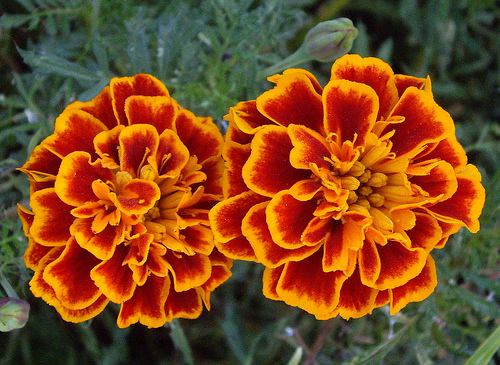
Half-hardy Annuals are those species that flower and ripen their seeds in the open air, but need the assistance of artificial heat in the earlier stages of their growth. They should be sown in a hot-bed, or in pots in a green-house, if one is available, or in a sunny window. Keep them well shaded, which will prevent absorption by the rays of the sun, and the consequent necessity of frequent watering, which bakes the soil, and does much mischief to seeds of slow growth. Toward the middle or end of May, many of the seedlings will be ready for transplanting to borders; but previous to this exposure, it will be necessary to harden them, preparatory to removal, by gradually admitting air to the frame both day and night.
Biennials
This plant completes its life cycle in two growing seasons. The first season, it produces only the basal leaves, grows its stem, produces flowers and fruits, and dies in the second season.
The plant usually requires some special environmental condition or treatment such as exposure to a cold temperature (Vernalization) to be induced to reproductive phase.
Although annuals and biennials rarely become woody in temperate regions, these plants may sometimes produce secondary growth in their stems and roots.
Perennials
They are herbaceous or woody and grows year-round through the adverse weather condition of their non-growing periods (winter, summer, winter, and fall) and then flower and fruit a variable number of years of vegetative growth beyond the second year.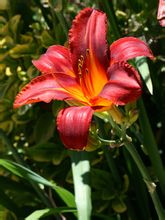
Perennials survive the unfavorable season as dormant underground structures (e.g. roots, rhizomes, bulbs, and tubers).
Examples are bermudagrass (Cynodon dactylon), daylilies (Lilium spp.), and Irises (Iris spp.).
Identifying two main groups of perennials
1. Herbaceous Perennials
Herbaceous perennials are those with more or less soft, succulent stems.
In temperate climates the tops die after a season of vegetative growth, sometimes dying down because of drought, sometimes killed by frost or freezing, sometimes dying simply after effect of flowering, fruiting, and producing seeds.
Their crowns, however, and often their roots, remain alive and produce new stems and tops another season upon the appearance of conditions favorable for growth. In other words, their tops are annual, though their below - ground parts are perennials.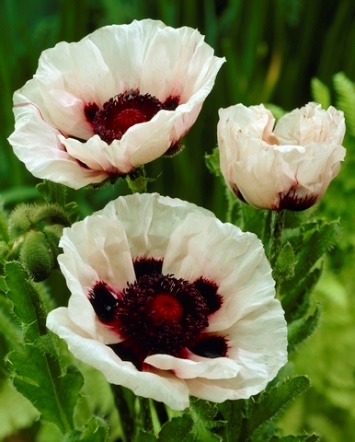
Examples of this group are; Asparagus, rhubarb, Oriental puppy (Papaver orientale), bleeding heart (Dicentra spectabilis), and many varieties of Phlox.
In tropic and subtropics climate the tops of herbaceous perennials may likewise die down, due to natural causes leading to a period of rest following flowering and seeding, or they may remain alive for long periods.
Most of the so-called "bulbous plants", using the term in its broad sense, are to be classed as herbaceous perennials.
2. Woody Perennials
Though the stems of many herbaceous perennials and likewise of many annuals and biennials, become somewhat woody and those of many woody perennials are rather soft, there is seldom any great difficulty in distinguishing between them. The difference, however, is in hardness, in toughness of the woody fiber, rather than in the size or age that the plant attain.
In the case of trees, shrubs, or vines that survive for a number of years there is never a question as to how they should be classified.
Some plants, however, growing as woody perennials in their growing habitat, take on the characteristics of herbaceous perennials when grown where their tops freeze to the ground in the winter but where the temperature is not enough to destroy their roots.
Plant growth forms
One way in classifying plants is its stands in relation to the ground. Some of the types of growth forms of flowering plants are as follows:
1. Erect
An erect stem has no support, it stands upright at 90-degree angle to the ground level. These plants have strong stems and stiff branches which can withstand strong wind and other adverse condition.
2. Decumbent
Plants under this form are extremely inclined, with the tips raised.
3. Creeping or repent
These plants crawls on the ground, produces adventitious roots at specific points on the stem. Stems that grow horizontally in this fashion are called stolons.
4. Climbing
These are vines that needs support to stand its own. If there is no support their tendency is to creep on the ground. There are three general modes of climbing; Twiners, are climbing plants that simply wrap their stingy stems around a support, another modes is the climber which develops its cylindrical structures called tendrils that are used to coil around the support on physical contact, and the other mode of climbing is by adventitious roots formed on aerial parts of the plants.
Other operational plant classifications
Flowering plants may be used in a variety of other ways, both indoors and outdoors. They are classified according to the following uses: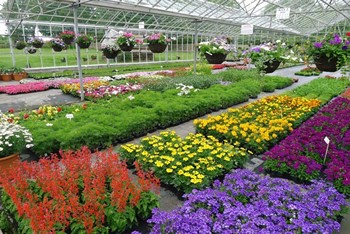
1. Bedding plants
These are annual plants raised for planting outdoors in flower beds. Started from seed indoors in the off-season and transplanted later in the growing season.
Examples includes Petunia (Petunia spp.), Zinnia (Zinnia elegans), Pansy (Viola tricolor), and Marigold (Tagetes spp.).
2. Hanging plants
These are hanging basket plants either annual or perennial, flowering or foliage, raised in decorative containers and hung by equally elegant ropes from the ceiling in the patio, in the doorway area, or from decorative plant poles.
Examples are Geranium (Geranium spp.), and Spider plant (Chlorophytum comosum).

3. House plants
These plants are adapted to indoor conditions. They are grown in containers, usually slow growing, and may be flowering or foliage plants.
Examples are Sansevieria (Sansevieria spp.) Indian Rubber plant (Ficus elastica), Philodendron (Philodendron spp.), Medicine plant (Aloe vera), and Pothos (Scindapus aureus).
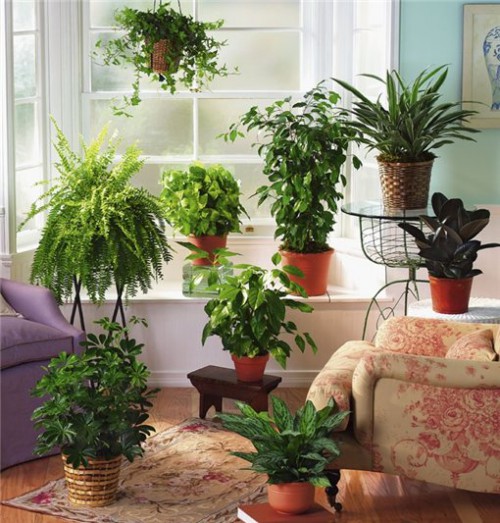
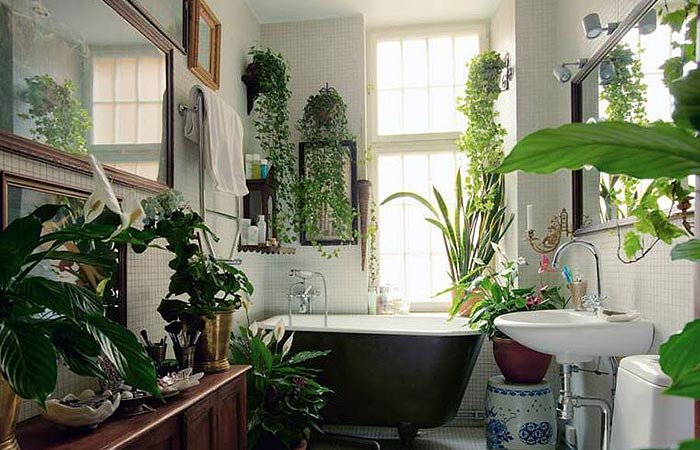
How to create tree flower beds
When you are planting a garden around your tree, protect your tree by following some simple guidelines about applying topsoil and avoiding the tree roots when planting. Then select plants that are compatible with your geographical region and the specific shade requirements of your garden plot. Lastly, learn how to plant your bed and maintain the plants with regular watering and care.
Method 1 of 3: Protecting your tree
Leave the base around the trunk of the tree free of any soil or mulch. Do your planting starting at least 12 inches from the tree's trunk, and go out from there. Make sure that where the trunk becomes wider and the roots are exposed that the bark remains uncovered. Do not create a raised flower bed around the tree base. The bark on the exposed roots of a tree needs oxygen, and if the roots are covered they will rot over time.
Trim the low branches of your tree. You want to allow as much light as you can to reach the flowers and plants below your tree. So get out a pair of trimming shears and trim any low, thin branches. Remember, however, that living branches should be on at least ⅔ of the plant's height, so never trim more than ⅓ of the living branches of your tree. 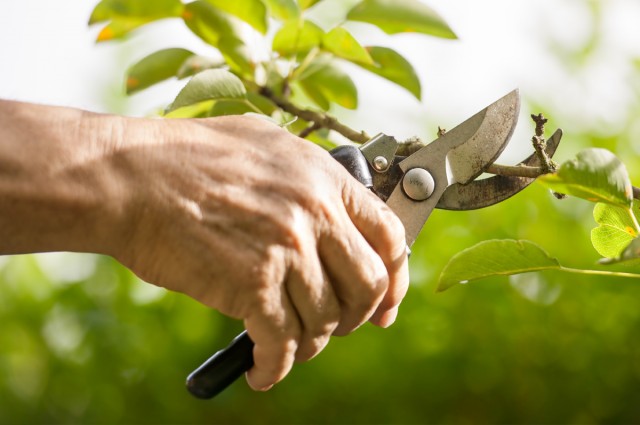
-
You can get pruning shears at a hardware store.
-
Only remove branches that are less than 5 cm in diameter.
-
Trim thin V-shaped branches. Avoid trimming healthy U-shaped branches.
-
Find a bud on the branch outside of the collar of the branch. The collar is where the branch meets the base of the tree and it is slightly swollen out. Cut at a slight angle of about an ¼ inch above the bud.
Try not to damage the trunk or roots when planting. Do not use your tools or shovel to move or cut any of the major roots of the tree. If you find a root that is bigger than 1 and ½ to 2 inches in diameter, move your hole a couple inches away to prevent cutting at the root accidentally. If you are planting between two major roots, make a hole just big enough to plant the plant or flower in. If you find roots while you are digging the bed, do not plant there, fill the soil back in, and find a new spot to plant.
Use a hand shovel instead of a larger shovel to avoid damaging the roots of your tree.
If you cut into mats of smaller tree roots while you are digging don't worry - they will regrow without much trouble.
If you cut into the tree you make it more susceptible to disease and insect problems.
Know what kind of tree you are planting under. Depending on the kind of tree you are planting under, you should be more careful about how many plants you plant. You may want to plant under a tree that is better suited for gardening at its base. If you do have a tree that is more sensitive, consider starting small and choose a few small plants rather than creating a dense garden at the base of the tree. If you have a tree that is sensitive, create a plan for your garden that will span a few years, so your tree can gradually acclimate to the new planting.
-
Be cautious when planting under these trees because they are sensitive about having their roots disturbed:
-
Beeches
-
Black oak
-
Buckeyes
-
Cherries and plums
-
Dogwoods
-
Hemlocks
-
Larches
-
Lindens
-
Magnolias
-
Pines
-
Red oaks
-
Scarlet oaks
-
Sugar maples
-
Method 2 of 3: Choosing the plants
Grow plants that are sun or shade compatible with your planting area. You first need to know how much sun exposure your bed receives. Observe your garden over the course of a day, and consider how your shade and sunlight levels will change in the different seasons. When buying plants, the descriptions will indicate how much sun they will need.
-
Full sun means that during the middle of the day in the growing season the area will get six or more hours of direct sunlight. If this is the case for your bed, you will have a wide range of plants you can choose from.
-
Partial sun means that the area receives direct sunlight from the sunrise until noon. The reason this is not full sun is because the sun in the morning is not as strong as sun in the middle of the day.
-
Partial shade is when your spot receives sunlight from 3 p.m. until the end of the day. Partial shade also applies to areas that have dappled or filtered sunshine for the full day.
-
Full shade would mean that the area is on the north side of a building or that the tree coverage is very dense and that even dappled sunshine does not show through. Although your options will be fewer, you can still find suitable, attractive plants for your bed.
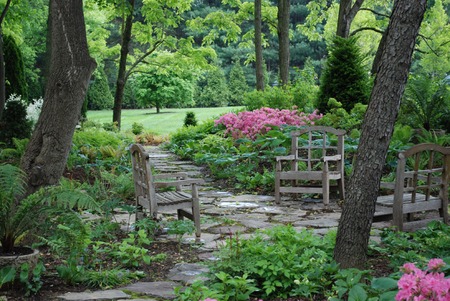
Pay attention to the mature size of the plant. Make sure that when the plant is full size that it will fit well under the tree and in the space you have. Buy small and low growing plants for your bed. Plants that will get tall may start to block sunlight for any smaller plants in the bed or encroach on the lower branches of tree.
Choose the flowers to plant under your tree. Planting flowers under your tree can make for a very attractive bed. Consider planting in a cluster of 3-5 different kinds of flowers or shrubs to create a more textured or flourishing look. Consider the zone where you are planting as well. When you buy plants, make sure they are suited for your region. For example, if you live in the desert, there are many flowers that are difficult to successfully grow in the summer because of the heat.
Choose a shrub to plant under your tree. These plants are easy to maintain and can add great variety to your bed. You will want to make sure that whatever shrub you buy is low growing. Once again, consider the sunlight and region where you live when you are selecting your plants. Shrubs are great for growing under trees because they can thrive with less light and/or moisture.
Method 3 of 3: Planting and after-care
Know when to plant. You should plant any flower other than a pansy after the last frost of the spring. Pansies are heartier and can withstand the cold. Other flowers will die if you plant them and a frost comes. Find the average last frost date from the previous year. Search online at plantmap.com for the last frost in your area. You can also use the National Centers for Environmental Information (NCEI) to obtain data on the last frost date in your location.
Certain plants will thrive best if they are planted during a specific time or at certain temperatures, so pay attention to the care instructions for your plant. For example, irises grow best if you plant them in the late summer or early fall instead of in the spring. You can go to garden.org to read more about how to care for your specific plant.
Note when you are buying your plants that annuals will grow just one season and perennials will last at least two seasons.
Set a perimeter for your bed. You don't need to create a border; however, you should know where the perimeter of your bed is to know where to plant. Take a shovel and mark off the diameter of the bed. Remember that you should start planting a foot out from the trunk of the tree, so 24 inches may be a good place to make a perimeter.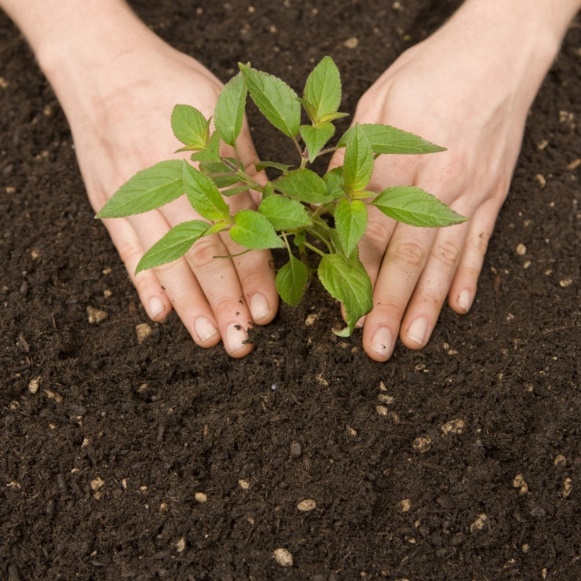
Cultivate the soil in your bed. Using your hand shovel, loosen the ground in your bed, and remove any weeds or debris under the tree. Add an inch or two of topsoil to the loosened ground. You can buy a premixed bag blended for perennial plants or annual plants from a hardware store.
Dig a hole a little deeper and wider than the container of your plant. Use your hands or your hand shovel to make a hole for your plant. Remember to dig a few inches away from the roots of the tree and a foot away from the base of the trunk.
Take the plant carefully out of its container. If it is a small pack with several flowers, push up from the bottom and lift the plant out from the roots. Untangle any roots that are stuck to the bottom of the container. If it is a potted plant, place your hand over the surface of the soil, and turn the plant over into the palm of your hand.
Loosen the roots of the plant. Take the outside of the root ball, and gently untangle some of the roots at the edge of the root ball. You do not want the roots to remain a dense mass, and untangling them a bit will allow the roots to plant more easily into the new soil.
Place the plant in the hole, and cover it with soil. Gently put the plant into the new soil, and take your new topsoil and cover the flower roots. Then press down on the soil around the base of the flower with your hands. Now your plant is almost set- repeat the above steps to plant the rest of your shrubs and flowers before you water.
Hold the plant by the roots rather than by the stems at all times.
Leave your plants room to grow, and weed your flower bed regularly. When you are planting, do not plant the flowers or shrubs too close together. Find out how big the plants are going to grow, and consider how densely you want the area to be populated with plants. Leave at least 2-3 inches of space between each plant. In addition, you should maintain your flower bed by weeding regularly. Use your hands and pluck out any unwanted plants that are growing around your flowers and plants by the root. If weeds are left unattended they can choke your flowers and take their nutrients.
Make a schedule on your calendar for when you should be weeding your flower bed to help keep you on track with your weeding.
Water the area where you have planted your flowers thoroughly. Water consistently after you have planted your plants. When the plants roots have to compete with the roots of a tree they will need more water. Set a watering schedule for your plants to help you keep track of when you have watered them and when you will need to water them again.
Every year add another inch of organic matter to your garden. You can add organic matter or more topsoil to your garden that is suited for your kinds of flowers, perennial or annual. You need to add organic matter because the bacteria and fungi in organic matter is food for your plants. You can make your own organic matter for your garden by composting. Using your vegetable scraps, garden clippings, leaves or manure, you can provide the nutrients your plants need to thrive year after year.
How to build a flower bed
While starting a flower bed requires some planning and forethought beforehand, it's not as difficult as one might think to build a flower bed from scratch. There are many types of flower gardens and no two are ever quite the same. You can plant a flower bed any way you like - big or small, curved or straight, raised or flat - whatever. Flower beds can also be changed as time goes on or as space permits. Let's look at how to create a flower bed.
So you want to build a flower bed. Where do you begin? Before starting a flower bed, you need to plan ahead. Take a stroll around your property and choose a suitable location. Take note of available light and nearby structures. Determine the whereabouts of any underground utility lines and the nearest water source.
Before you plant a flower bed, you should make a sketch. This is important, as it allows you to play around with ideas, like the size and shape of the flower bed. It will also make it easier when choosing plants, as these should always be compatible to the area. Use a hose, spray paint or flour to mark out and shape the bed. If building a raised bed, determine the type and amount of edging material as well.
How to start a flower bed
Once you know how to create a flower bed, you're ready to build it. Depending on its location, size and whether or not containers are used, starting a flower bed often begins with the removal of grass. There are several ways to accomplish this - dig it out, apply herbicide or smother it with cardboard or newspaper.
If you choose to dig out the grass, it will be easier to use a flat shovel. Dig down about four or five inches around the bed's perimeter. Include sections inside the bed as well, especially for larger ones. Then carefully lift out or peel back the sod. Clear out any debris and loosen the soil, working in organic matter. Add some plants, water thoroughly and mulch generously to keep out weeds. Don't forget to add an attractive border to define the edges.
Most people prefer the no-dig approach. It starts with eliminating the grass as we did in the dig method. While using herbicides can effectively kill grass, it may not be suitable for planting until much later, as herbicides are not environmentally friendly. However, you can easily smother grass quickly and effectively without the use of harmful chemicals simply by using cardboard or newspaper.
You can start the no-dig bed in early spring for summer planting or build a flower bed in fall, as grass begins to go dormant. Fill the area with cardboard or several layers of newspaper and saturate with water. Add about six inches of compost or rich soil on top with another layer of organic mulch (like straw) on top of this. You can plant a flower bed right away if the grass was dug out or within the next season using the no-dig method.
Knowing how to start a flower bed, along with careful planning beforehand, makes building one as easy as that!
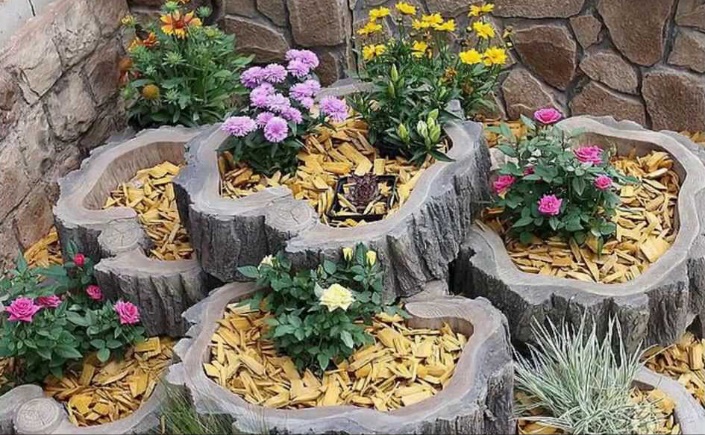
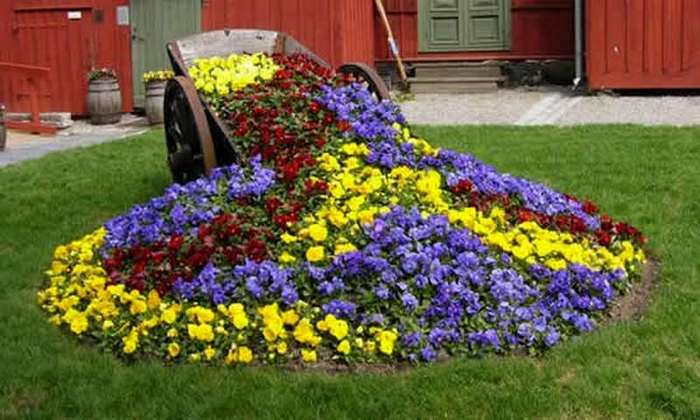
Greenery
Greenery is the planting of plants. Planting of greenery is a laborious process. You are to take into account peculiarity of soil, light, humidity, relief. Then to choose landscape plants for greenery, which have necessary frost-, winter-cold- and drought-resistance. Some landscape plants for greenery love a bright light, some landscape plants for greenery prefer scattered light or shade. There are landscape plants for greenery which well naturalized for long-term cold spells. We cultivate only such landscape plants for greenery in our nursery for plots, and heat-loving landscape plants use for interior landscape design for home and office.
Landscape plants for greenery we cultivate in our nursery on the North from Moscow and guarantee their taking root. We have got young landscape plants for greenery in our nursery newly grown from seeds (seedling), landscape plants for greenery grown by cutting shot piece of a plant (graft) and landscape plants for greenery newly grown by layers. Our nursery guarantee quality of the landscape plants for greenery of your garden.. Different methods of propagation supply our company with qualitative saplings in sufficient quantity. We sell our landscape plants for greenery in pots and drugged out with clumps of earth.
Greenery needs some analyses of a soil. It is necessary to carry out:
- topographical survey;
- to find out of the subsoil water's level;
- analyze fertility of a soil (strongly acid, weakly acid, neutral, strongly or weakly alkaline, how much humus, nutrient elements it has);
- if it is necessary to make a project of drainage system;
- if it is necessary to make a project of automatic sprinkling system;
Landscape plants (trees and bushes) differ from each other by color, size of leaves and flowers, by trunks and sprouts. One is to get to know peculiarity of growth and developing of trees and bushes so that to compose them nicely.
We can also plant on your plot fruit-bearing tree or and bush.
Planting of greenery in a garden, cultivating of landscape plants - trees, bushes, flowers in plant nursery;
Lawn, garden hedge, flower bed plants, garden service and care of;
Garden constructions: driveway, paths, walks, walling; pavilion, gazebo, pergola, arch, porch;
Garden water features: garden reservoir, pond, stream, cascade, waterfall, rocks in a garden;
Interior landscape design for home and office.
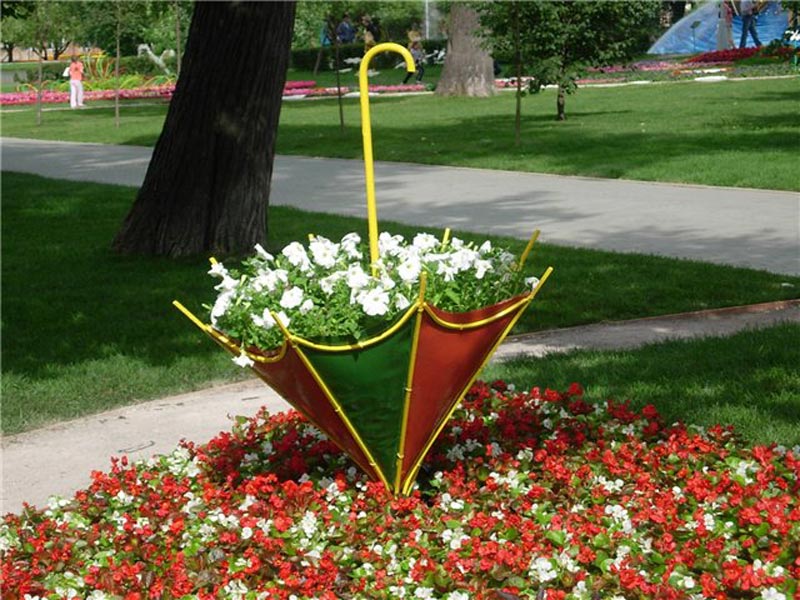
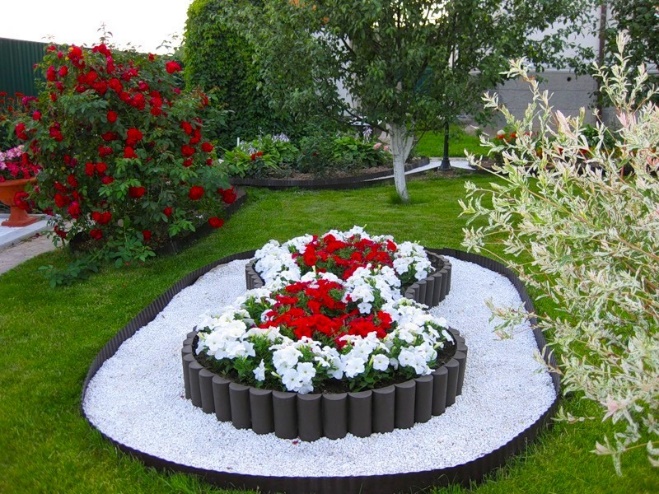
Раздел III. Экология
Water resources
Russia has unique water resources, almost equal to one fourth of the global water resources. However, these resources are poorly accounted and managed, and they are unequally distributed across the country. The majority of high quality water resources of Russia are concentrated in the mountain regions, the Baikal Lake, and rivers of the Eastern Siberia and Far East, from where it is difficult to deliver water to other regions of the country. As a result, many regions have to use poor quality water.
For a long time, no real measures were taken to change the situation with water in Russia. In the last 20 years, the situation in the utilities sector deteriorated significantly, and now potable water and international quality standards achievement are extremely acute issues. 11 million residents of the Russian Federation use water, which is unsuitable for drinking. 50 million Russians, i.e. a third of the population use poor quality water daily. The wear and tear of water supply and discharge networks is 70 %.
Current situation is yet not considered as a crisis or even a disaster. At the same time, even now there are several zones, where the water crisis signs in Russia become obvious:
-
Urban water supply.
The existing water supply system in Russia use obsolete Soviet times technology, the key assets are exhausted, and go out faster and faster. Investments and implementation of new technologies for the system re-equipment may not catch up with the obsolescence and breakdown of the key assets.
-
Exhausted tanks preventing urban and industrial growth.
At present, the key water tanks in residential and industrial centers are more and more exhausted in Russia. As a result, in 2020-2030-s, the lack of water may create significant challenges for the growth and development of the main industrial and urban centers in the Russian Federation.
-
Agricultural development.
The overall demographic situation in the world suggests that already in the next 10 years the global food crisis will become more acute. According to experts, due to its vast territories and moderate climate, Russia can potentially become one of the major grain producers in the world. To achieve this, it is necessary that Russian agriculture switches to such a system, which is stably functioning regardless of climatic conditions and condition of (shallow) rivers. This requires new water supply systems with the use of modern international technologies. 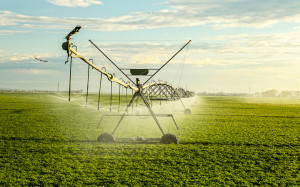
Russia's position as regards to the global water situation is twofold:
-
On the one hand, the southern regions and the European part of the Russian Federation (i.e. the industrially developed zones and promising regions) are approaching the situation of the European countries and the US, where in the nearest future several regional water crises with potential global impact are expected;
-
On the other hand, Russia has significant fresh water reserves (Baikal and Siberian regions).
The following 3 issues are currently the most acute for Russia:
-
Development of the state water management policy.
This is an interdepartmental and interdisciplinary issue, as it requires settlement of various conflicts of interests: cities and residents, agriculture, transport, hydro energy, industry, etc. Development of the state water management policy both at the federal and regional level requires a shift in water resource management paradigm from the water resource distribution concept to the concept of management of reducing and deteriorating resource. Such management requires new approach, and another management process.
-
Establishment of an expert community.
At present, the lack of an established expert community capable of discussing long term water and water management issues as an interdepartmental and interdisciplinary issue is one of the key problems in Russia. Similar processes of expert community establishment are underway in the US, Australia, European countries, and Japan, China has joined this process, and India starts to join it also. Position and voice of Russia in the global water context are extremely important. At present, the Russian Water Association is the site suitable for establishment of Russian expert community and relations with the international water community in the Russian Federation.
-
Establishment of an adequate and correct community attitude towards water (from water conservation to water quality) is one of the most acute issues in Russia.

Forest Fires
A forest fire is most often referred to as a wildfire or a bush fire. Any fire, that spreads uncontrollably over an expanse of vegetation or forest cover in the wild is called a forest fire. A forest fire generally occurs when the vegetation and forest cover in an area is completely dried out due to a heat wave or a drought condition. Once a forest fire begins, it spreads very rapidly and becomes very difficult to control. When out of control, they can cause extensive damage to not only the forest cover, but also to human life and the environment. A forest fire can occur in any area that provides the basic ingredients for a fire: oxygen, heat and combustible fuel. A forest fire is different from other fires because of the wide area that it covers, the breakneck speed by which it spreads, its ability to change directions in a random manner and also to jump partitions and continue to burn.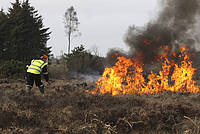
There are two types of causes of forest fires. Whatever the cause is, the degree of the fire has nothing to do with it. A small source could end up destroying an entire forest, while a seemingly more dangerous source may start a fire that can be easily controlled. Forest fires have two main causes: they are either natural or caused by man. 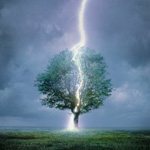
Natural Causes: Natural causes of forest fires include lightning, volcanic eruptions, and also the sparks that fly off when two rocks collide with each other forcefully or when they fall from a height.
Man-Made: Forest fires are caused by people when they throw cigarette butts in a dry vegetative area, when sparks fly off during the handling of heavy machinery in the forest are or even by the overhead wires running across forests. While more than half of these are caused by accident, some of them are caused by simple human negligence, something that can be very well avoided. 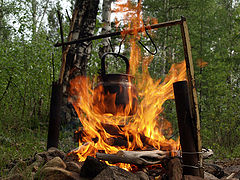
The region in which the forest is located also influences the cause of the fire. For instance an area prone to a lot of rainfall, with very tall trees and possible electric wires, will be more likely to catch fire by lightning, whereas, an area that is more inhabited by humans, is more prone to a fire caused by arson or negligence.
Effects of a Forest Fire
Positive Effects
-
Forest fires are important for the life cycle of many trees. What a fire does is, it takes all the warm air above the trees. This warm air makes all the cones in the trees dry up and when the cones dry, they pop and the seeds fall onto the ground giving rise to more growth.
-
Any undergrowth that surrounds trees within the forest gets cleared by forest fires. This makes it easy for the new plants to grow more easily.
-
Also, any dead and decaying matter in and on the soil gets burned and cleared off, which allows new plants to grow.
-
The smoke from the forest fires can also act as an exterminator of poisonous insects within the forest. The fire helps to get rid of diseased plants from within the forest.
Negative Effects
-
The first harmful effect of a forest fire is definitely the devastating loss of forest cover. Entire forests can get wiped off due to forest fires, which can severely harm the ecological balance of nature and cause changes in the climate of the region.
-
The next harmful effect of forest fires is the increase in the level of air pollution in the surrounding area. The smoke can be very hazardous to humans and animals living in the area and can cause death by excess inhalation.
-
Economically speaking, a lot of valuable timber is lost in forest fires, which can lead to losses in various fields.
Managing a forest fire is not an easy task. Firemen have to work days on end to get the fire under control and then finally put it out. So if you happen to visit a wooded area, make sure that you take all the necessary precautions and measures to see to it that you don't, in any way start one.
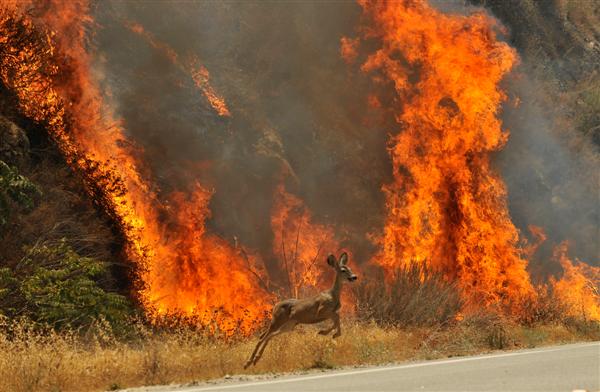
Environmental protection
Some hundreds of years ago, people lived in harmony with nature, because industry was not much developed. Today, however, the contradictions between man and nature are dramatic.
The twenty first century is a century of the scientific and technological progress. The achievements of the mankind in mechanization and automation of industrial processes, in chemical industry and conquering outer space, in the creation of atomic power stations and ships are amazing. But at the same time, this progress gave birth to a very serious problem - the problem of environment.
Ecology and the contamination of environment, is concerned with climate, over-population in certain areas, deaths of plant and animals, chemical contamination of seas, lakes and rivers as well as atomic experiments and dumping of atomic waste from power stations. Floods, unexpected draughts, and the greenhouse effect are the next reasons.
There are many consequences of damaging the environment. One of them is acid rain. Another one is water shortage resulting from abuse of arable lands in agriculture. The third one is destroying the ozone layer of the Earth through pollution from factories and plants. The fourth problem is damage o water and soils. The fifth one is damage to wildlife: numerous species of animals and plants can disappear. At last, the most serious danger arising from damaging the environment is the result of the abovementioned consequences. This is the danger for the life and health of the man.
The protection of natural resources and wildlife is becoming a political programme in every country. Numerous anti-pollution acts passed in different countries led to considerable improvements in environment. In many countries purifying systems for treatment of industrial waters have been installed, measures have been taken to protect rivers and seas from oil waters.
But the environmental problems have grown beyond the concern of a single country. Their solution requires the co-operation of all nations.
If we are unable to learn to use the environment carefully and protect it from damage caused by man's activities, very soon we'll have no world to live in.

Tree pests and diseases
Listed below are a few common pests and diseases that you may encounter with your trees.
Pests:
Whiteflies are small winged insects that fly up in clouds when you touch an infected plant. Signs of infection include yellow stippling at first, then leaves that curl and turn brown. To prevent whitefly infestations, carefully inspect indoor and greenhouse plants before planting them in your garden. Natural enemies of the whitefly include lacewing larvae, Delphastus pusillus (a species of lady beetle), Encarisa formosa and Eretmocerus californicus (both species of parasitic wasps.) You can also handpick heavily infested leaves, use yellow sticky traps, hose off the plant with a jet of water or use insecticidal soap, azadirachtin, horticultural oil or pyrethrins.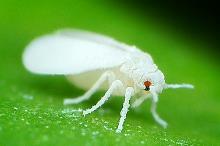
Aphids are small insects ranging from pinhead to matchhead size. They may be black, white, pink, or pale green. They cluster together on young shoots, buds and leaves. They pierce the leaves and stems of a plant and suck out its juices. Some may also transmit viral diseases. The best control tactic is to do nothing and leave the pests to natural controls. There are a number of creatures that prey on aphids including lady beetles, lacewing larvae, soldier beetles, syrphid flies, predatory midges, parasitic wasps, and even lizards and some birds. Aphids can also be blasted with strong jets of water or sprayed with insecticidal soap. Pesticides should only be used when the infestation is severe.
Thrips are almost microscopic. They feed by rasping soft flower and leaf tissue and sucking plant juices. They may also spread plant disease. Symptoms of a heavy infestation include flowers and leaves that are discolored and fail to open normally, and look twisted or stuck together. Leaves may take on a silvery or tan cast. Numerous small, black, varnishlike fecal pellets on leaf undersides indicate the presence of thrips. Natural enemies include lacewing larvae, minute pirate bugs, predaceous thrips, mites, and spiders. Insecticidal soap, horticultural oil, acephate and malathion can be used to control infestations. 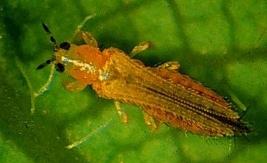
Scales are related to mealybugs and aphids, but have a waxy, shell-like covering. They have a number of natural enemies including lady beetles. Scale-infested plants can also be hosed off frequently. Scales can be handpicked off plants or scraped off with a scouring pad. With deciduous trees, adult scales can be killed in the winter with horticultural oil. Horticultural oil, inseticidal soap and insecticides are effective against scales when they are in the crawler stage.
Diseases:
Anthracnose is caused by fungi and appears early in the growing season. It seldom kills plants. Symptoms vary but include sunken, gray or tan to dark brown spots on leaves, stems, fruit or twigs. Leaves may wither or drop. The spores that cause anthracnose are spread by rain and garden sprinklers. To discourage the disease, avoid overhead watering and use mulch to decrease splashing. Plant resistant varieties whenever possible. Remove infected leaves, fruit, twigs and branches and destroy them.
Fireblight is the result of a bacterial infection and attacks only members of the rose family that produce pomes. This includes (but is not limited to) apple, crabapple, hawthorn and pear species. It causes shoots to blacken and die suddenly. Plant resistant varieties whenever possible. Once the disease has appeared, prune out and discard diseased branches. Disinfecting tools can help keep the disease from spreading.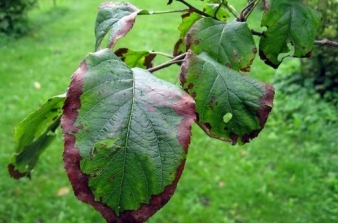
Oak Root Fungus results from an infection by the fungus Armillaria mellea. It destroys trees and other woody plants by gradually decaying their roots, eventually girding the plant. The first symptoms may be dull or yellowed leaves and/or sparse foliage. Leaves may then wilt and branches die. If a tree is infected with oak root fungus, you will see a layer of whitish fungal tissue under the bark of the trunk or large roots. Clumps of tan mushrooms may appear around the base of infected plants in late autumn or early winter. Plant resistant varieties whenever possible. There is no chemical control.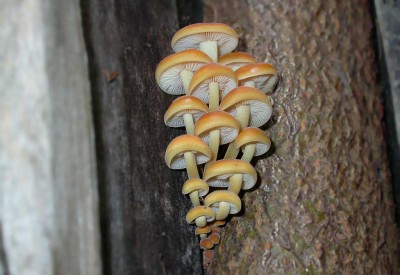
Powdery Mildew is a group of diseases caused by fungi that infects leaves, buds, flowers and/or stems. It first appears as small, white or gray circular patches on plant tissue, then spreads rapidly to form powdery areas of fungus. New growth may be stunted and blossoms may fail to set fruit or may produce fruit covered with fungus. Plant resistant varieties whenever possible. To control the fungus once present, spray infected plants with jets of water early in the morning. Pick off and destroy infected leaves and flowers. 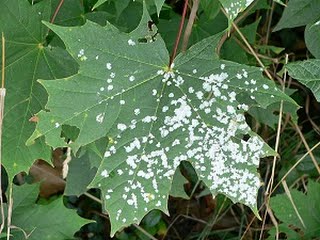
Verticillium wilt results from a fungus that invades and plugs the water-conducting tissues in the roots and stems of plants. A common symptom is the wilting or death of one side of the plant. Leaves turn yellow or brown, then die. Entire branches die as the disease progresses. Infected mature trees may linger on for long periods. The fungus can survive in the soil for years, even in the absence of host plants. Plant resistant varieties whenever possible. Mildly affected trees may recover. Aid recovery with deep but infrequent irrigation. 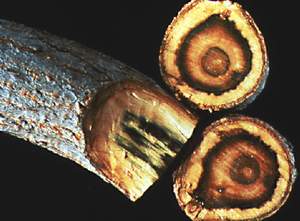
Sudden Oak Death Syndrome, or SODS is a forest disease caused by Phytophthora ramorum, a fungus-like pathogen. It can be fatal to some plants, including coast live oak, black oak, Shreve oak and tan oak. P. ramorum affects different species in a variety of ways, and is spread through a wide number of host species, including the California bay laurel and rhododendron varieties. The pathogen itself is spread by wind-blown rain. 
Интернет-источники:
1) en.wikipedia.org/wiki/Landscape_design
2) landscaping.about.com/cs/designexamples1/a/diy_landscaping.htm
3) poolandpatio.about.com/od/patiolandsaping/fl/What-is-the-Difference-Between-Hardscape-and-Softscape.htm
4) landscaping.about.com/od/landscapedesigner1/a/become_designer.htm
5) rusticgirls.com/landscaping/greener-lawn.html
6) greenhousesonline.com.au/pages.php?pageid=15
7) pages.towson.edu/lieb/tuwired/flowers4.htm
8) kids.britannica.com/comptons/article-206609/plant
9) wikihow.com/Create-Tree-Flower-Beds
10) nprvo.ru/en/water/sector/
11) fao.org/docrep/005/AC681E/ac681e09.htm
12) canopy.org/caring-for-trees/trees-and-water/


